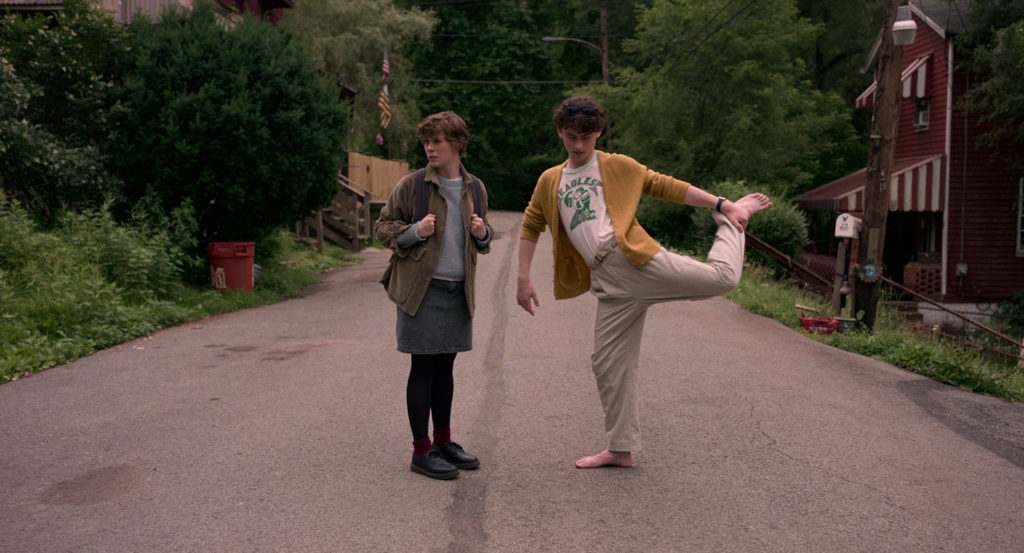We’re continuing with a series of interviews with binge-worthy shows that Art of the Cut readers wanted to hear about. I had never heard of either of these shows, and I’m so glad I was finally turned on to these great shows. Plan on watching these for the next few weeks! I’m particularly taken with the fantastic acting – and editing – of I Am Not Okay With This.
This interview is with the editors of two TV series: I Am Not Okay With This and What We Do in the Shadows (from writer/director Taika Waititi). The editors are Yana Gorskaya, ACE, and Dane McMaster.
Yana won an ACE Eddie for editing the documentary, Spellbound. She was a consulting editor on JoJo Rabbit and Thor: Ragnorak. She was editor for Hunt for the Wilderpeople, and the feature film of What we do in the Shadows, among many other docs, features and TV shows. Yana also directed two episodes of What We Do in the Shadows.
Dane has edited TV series including Trial and Error, A.P. Bio, and Southside. Dane and Yana also both worked on the TV shows: Trial & Error and Review.
In this interview, we go back and forth between discussing editing What We Do in the Shadows and I Am Not OK with This.
This interview is available as a podcast.
(This interview was transcribed with SpeedScriber. Thanks to Martin Baker at Digital Heaven)
HULLFISH: What is a typical schedule for an episode?
GORSKAYA: Both shows have really different workflows and processes. On I Am Not Okay With This, Dane and I cut everything together.
McMASTER: We should probably start with that because we do have a slightly different process.
HULLFISH: That’s really interesting because that is rare in TV. Normally one editor picks episode 1, the next editor takes episode 2…
McMASTER: That’s what I was used to before I worked with Yana. And not to put words in Yana’s mouth, but I think because she came from feature and doc into TV she had a different way of working.
GORSKAYA: I’m a big believer in all hands on deck and taking advantage of all the brainpower in the room. And if a good idea comes in, we should absolutely use it. I found that that was really useful for us editorially — for Dane and I to kind of take a pass at everything and be each other’s safety net. It elevates the work and we all get to take credit for it.
McMASTER: Or we get to collectively take the blame. And it’s much easier taking the blame when it’s both of you than when it’s just one of you.
HULLFISH: Well I think it’s about taking the credit In this case, because I thoroughly enjoyed the show.
So you pass scenes back and forth between you? Before the virus happened, were you editing in the same place? Was that easy to do? How were you collaborating?
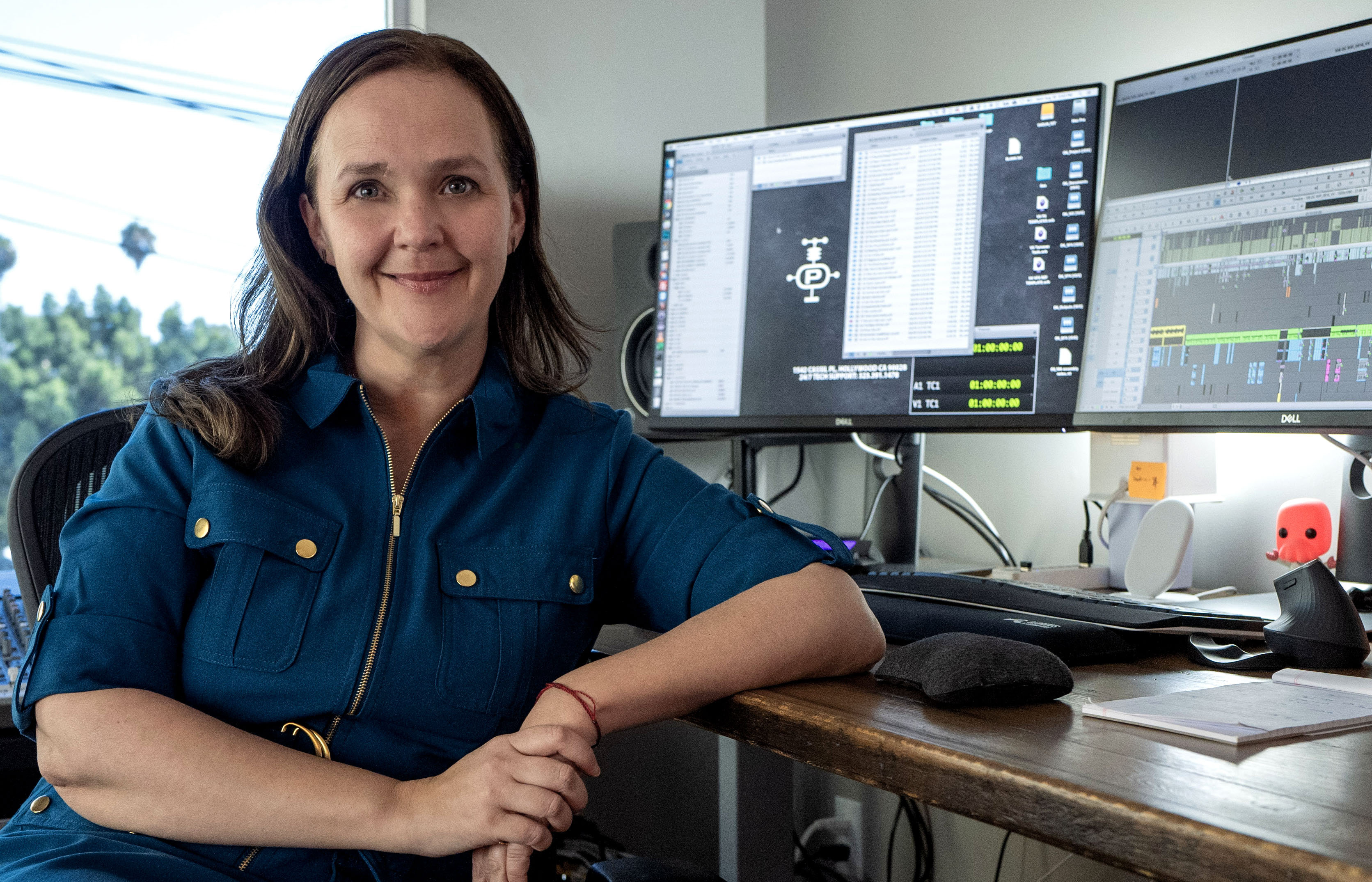
GORSKAYA: We worked in the same building at a post house here in L.A — at Pacific Post. What We Do In the Shadows and I Am Not Okay With This both posted in the same place.
But to answer your original question on I Am Not Okay With This, the workflow was that Dane and I would get all the dailies and cut them into as much of an episode as we had and send them to the showrunner/director, Jonathan Entwistle at the end of each week. He was able to see what he had and design the rest of shooting around that which was incredibly valuable for him. We decided to do that, in part, because that’s how you work on a feature.
You’re giving directors scenes to show them what they have and give them a bit of a safety net. And then the other thing with I Am Not Okay With This is we didn’t lock any episodes until we had rough cuts of the entire season. So we could kind of go back and reshape things to make sure we were telling the same story and that tonally things were consistent.
McMASTER: That workflow wouldn’t be possible with other shows that we work on. It was possible because of the way that Jonathan shoots. He’s very specific in terms of the material he gives you. So we could really dig in and get something in great shape to send to him at the end of each week.
By the time Jonathan came into the room, there weren’t really any surprises with the first assembly. He kind of knew what he had. That was a wonderful part of the process because everybody is working in the same direction from that first day of editing together.
GORSKAYA: And because he had the pieces before he came into editorial he knew what he might be missing, so there weren’t massive holes that we were trying to fill.
HULLFISH: That’s really helpful for you guys right, because then you get what you want or at least what he wants.
GORSKAYA: Yeah and he’s giving us feedback as we go so we’re able to shape cuts forward in that way. That was a great process. Shadows is a really different animal because there’s so much improv and the scripts are wonderful but long, so finding what an episode looks like just takes more time.
They’re pretty much completely done with production before we have things to show. Some of that is brain space. It’s a really intense process. Their days are really long and so for them to have room to really take in an episode and start to get into the notes process with us, I think they need to be done with production because it’s so full-on.
The benefit of that is that Dane and I get a lot of time to play and shape and try things before they have to really dig in with us.
HULLFISH: With What We Do In The Shadows, you mentioned that there’s a lot of improv. I think a cut for TV tends to be much tighter to the final length. Are you finding that’s not true with that because you want to show them so much of the improv?
GORSKAYA: We try and make a fair amount of choices because there’s so much improv. We try and rein it in so that they only have to whittle down 2-3 minutes as opposed to 20, which is what it could be.
Part of that is because we have EPs that are working remotely and you want to make the most of their time. The good thing is is that Dane and I have a really similar sense of humor which tends to be in that deadpan kind of smaller world, so we are all on the same page with our EPs — with Jemaine and Paul and Stefani and Sam — they all like that too.
So we make a lot of choices and our cuts are actually pretty tight by the time they make it to producers, but that’s not to say that there isn’t quite a lot of room for them to play and decide what they like.
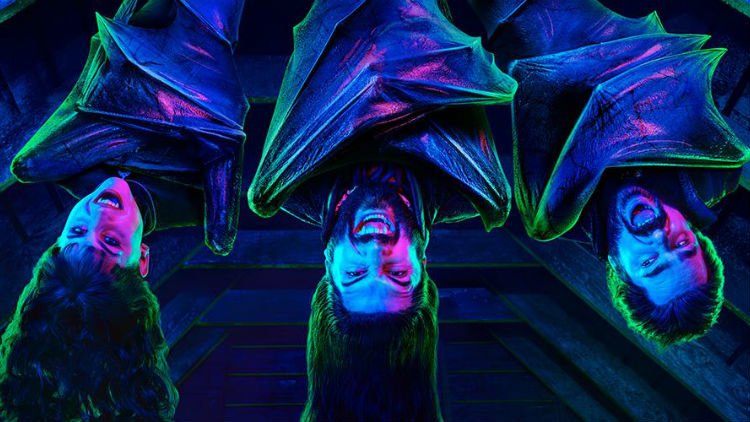 McMASTER: There will obviously be times when somebody might say, “I remember there being something that happened during that scene. Can we see a cut that incorporates that?” Or there may be times where we are asked to veer towards the scripted line. There’s always a little bit of back and forth.
McMASTER: There will obviously be times when somebody might say, “I remember there being something that happened during that scene. Can we see a cut that incorporates that?” Or there may be times where we are asked to veer towards the scripted line. There’s always a little bit of back and forth.
We should probably list everybody’s names, Yana.
Our main EPs who we’re working with are Jemaine Clement, Paul Simms, Stefani Robinson, and Sam Johnson.
GORSKAYA: It’s a very smart room.
HULLFISH
“Great notes” in other words?
McMASTER: Yes smart notes always. A lot of comedy experience. You’re benefiting from that when you get their notes.
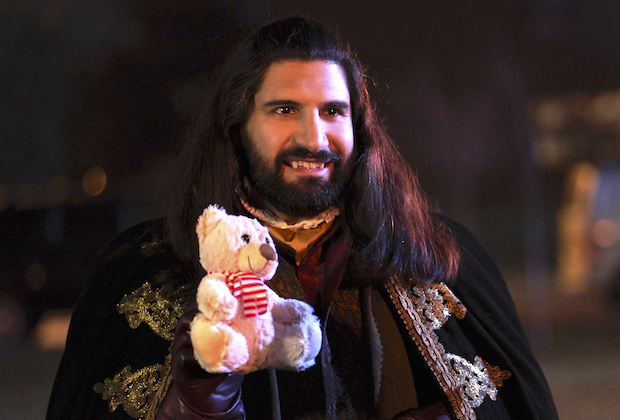 GORSKAYA: And then internally we had the same assistant editors on I Am Not Okay With This as we had on What We Do In the Shadows and that would be Varun Viswanath and Antonia de Barros. They are both very quickly heading towards being editors themselves and will not be our assistants for much longer, which is sad for us but they’ve earned it. We’re lucky to have them.
GORSKAYA: And then internally we had the same assistant editors on I Am Not Okay With This as we had on What We Do In the Shadows and that would be Varun Viswanath and Antonia de Barros. They are both very quickly heading towards being editors themselves and will not be our assistants for much longer, which is sad for us but they’ve earned it. We’re lucky to have them.
Varun has already been editing quite a bit on our shows – he cut on both seasons of What We Do In the Shadows and I Am Not Okay With This. And Antonia edited an episode on this season of Shadows, too. They’re both super talented.
HULLFISH: Back to the collaboration and the improv thing. Are you actually watching all the dailies the other editor is watching? Or are you just picking scenes?
McMASTER: We have a very specific way we’ve developed in terms of how we work. In the Avid project, the new scenes are all put into a folder called “To Cut”. And then there are two other folders in there called “in progress” and “done.”
We just pick — fairly randomly — scenes from “to cut”. And then once one of us has a rough cut that will just sit in a bin until it comes time to assemble an episode. Perhaps I’ve cut most of acts one and two, so Yana will assemble acts one and two and I’ll assemble acts three and four.
And at that point we will do a pass on each other’s work which will mean sometimes going into the dailies but we will leave each other markers. I might leave a marker that says, “There’s some other improv for this if you want to take a look at take four.” I’ll tend to put anything that I liked that hasn’t been used in the cut — that was strong — at the end of the sequence.
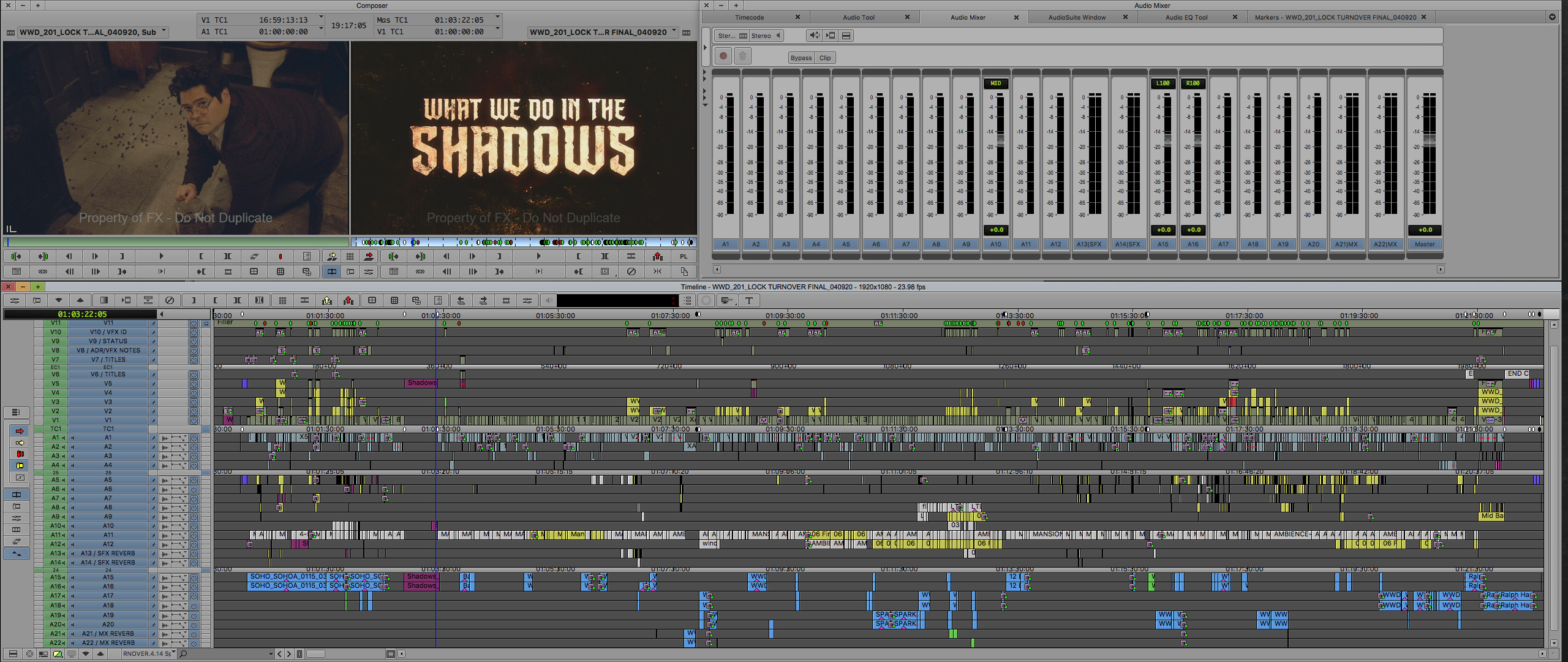
We end up calling them “spare parts,” so it’s a quick way for each other to look at stuff that wasn’t used.
So it’s a process of leaving each other markers and breadcrumb trails. Diving into the dailies to check stuff out.
GORSKAYA; We’ll also cut each other alts. Sometimes when there’s an evenly good joke or piece of improv we’ll put a little alt in — which a lot of directors or producers don’t like to see that — but for us that’s really useful: to do multiple versions of a joke or of an ending.
McMASTER: They can sit in the bin and then if it comes up again in the future — maybe you’re sitting with the director and she says, “Oh, I remember a bit where such and such did this joke.” We can quickly pull up that alt and preview it for them. That all feels like a useful process for when we hit the notes stage later. We’re very prepared.
HULLFISH: I really love the idea of that. What strikes me is that when I’m cutting with other editors my notes or my little locators tend to be just for me. But it’s really a different thought process of leaving a note that is not just for you but for someone else as well.
GORSKAYA: We’ve done this long enough now that we’ve assigned ourselves colors. So I’m pink and Dane is turquoise.
HULLFISH: I don’t know if that’s sexist… (laughs).
McMASTER: When it’s said out loud it does feel a little like that.
GORSKAYA: It just felt natural. I chose pink. It wasn’t imposed on me.
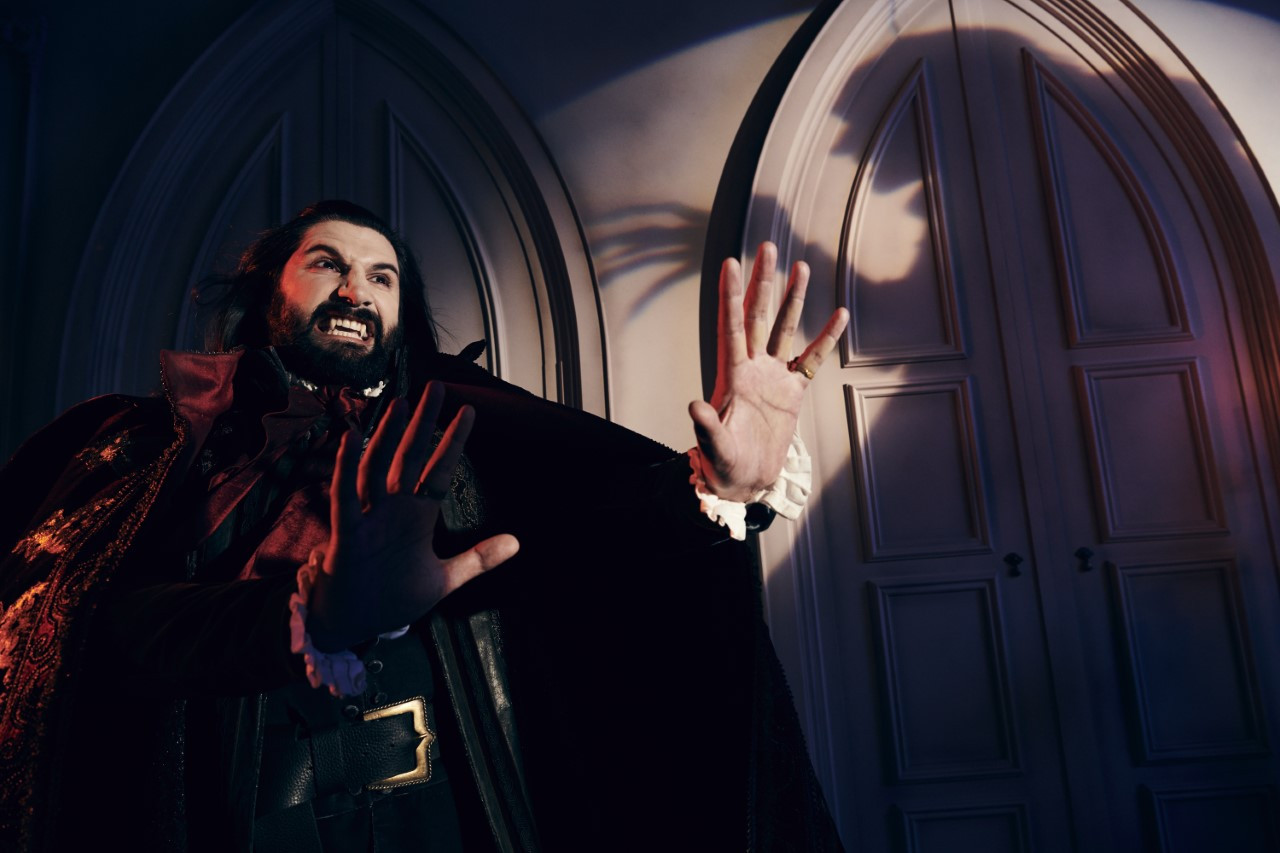 McMASTER: Those markers are a continual conversation we have, and it’s the reason why when COVID happened and we began working remotely from home it wasn’t a huge problem for us.
McMASTER: Those markers are a continual conversation we have, and it’s the reason why when COVID happened and we began working remotely from home it wasn’t a huge problem for us.
When Yana says we do everything together, we really do everything together including director notes and producer cuts. One of us might take acts one and three and the other might take acts 2 and 4. We will do those notes and leave markers that say that we love this change, that was a great trim, or does this work?
GORSKAYA: Or “this doesn’t exist” or also take a look at this take that might be better to address this note.
McMASTER: That has made it very easy with this home remote working. It hasn’t changed that much for us.
GORSKAYA: Well that and the fact that our producers were already far-flung so we had been figuring out how to work with people in New York and New Zealand for a while already. So that transition — and also honestly our post Producer Ingrid Lageder and Varun and Antonia were amazing at figuring this out and how to get us all working remotely.
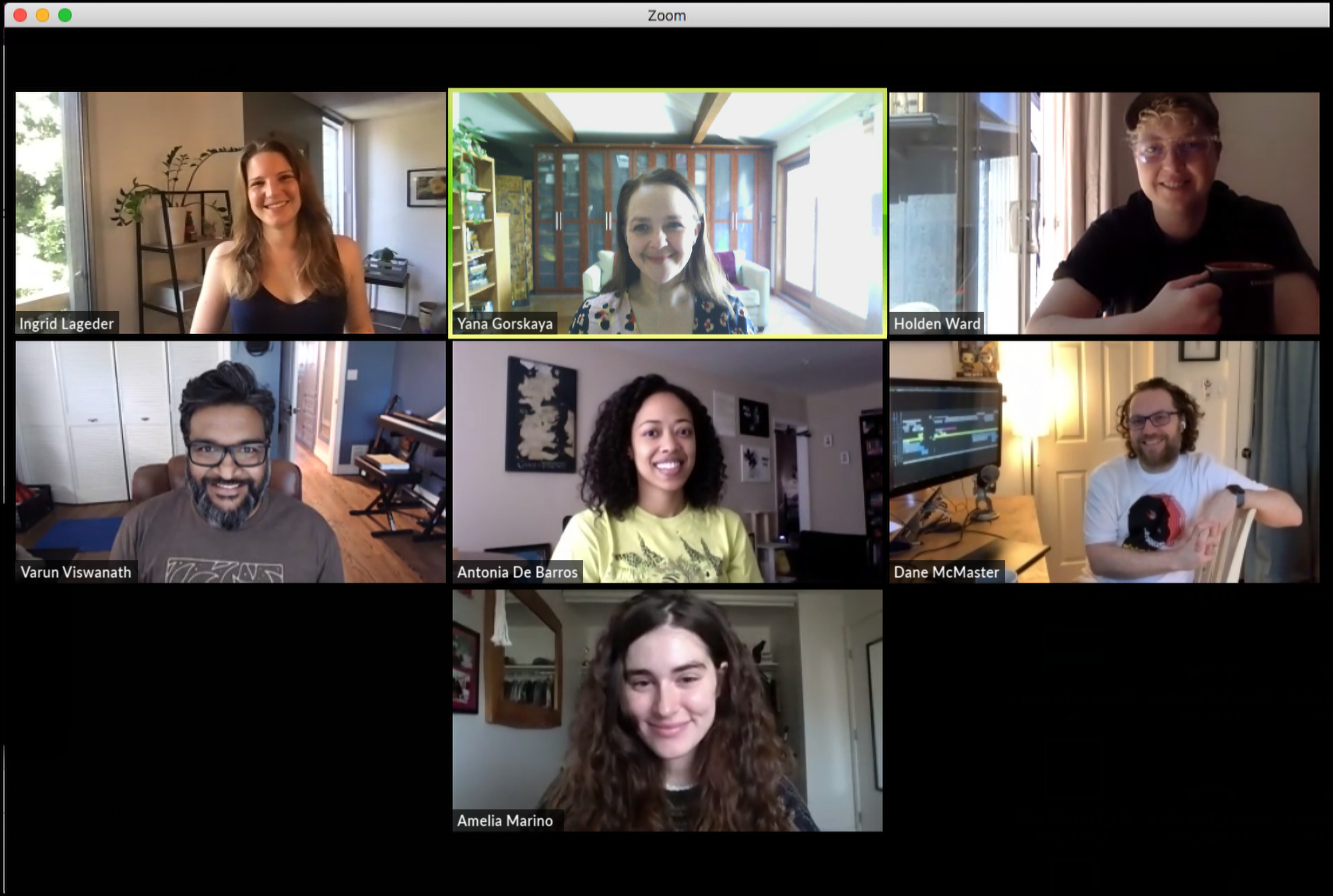
We did the mixes remotely and we do VFX remotely. We review conforms remotely. We have this lovely every-morning-thing where we all get together on Zoom and lay out the day. Some of that is for morale but it’s also to explain: “This is what’s on my plate.” Understanding the challenges of all of the team and making sure that everyone’s on the same page and understands what’s coming in and what’s going through. And that’s been actually really nice.
And we get to see each other’s pets! (laughs)
HULLFISH: That’s always awesome right there!
GORSKAYA: Yeah!
HULLFISH: I wanted to get back to I Am Not Okay With This. You mentioned that you got to deliver the episodes all at once. That’s super cool, right? Because if you’re delivering “per episode” you can’t go back and say, “Oh, if we left this little clue in the first episode that would pay off in the tenth episode” or whatever it is.
GORSKAYA: There were threads that felt like they were underdeveloped and didn’t quite land when we hit the final episode.
We didn’t feel like we had seen enough of her diary or that had landed in a way that you would even know what it was.
SPOILER ALERT: When her nemesis pulls it out onstage at the end. So we went back and actually created through VFX some shots we didn’t have of the diary throughout.
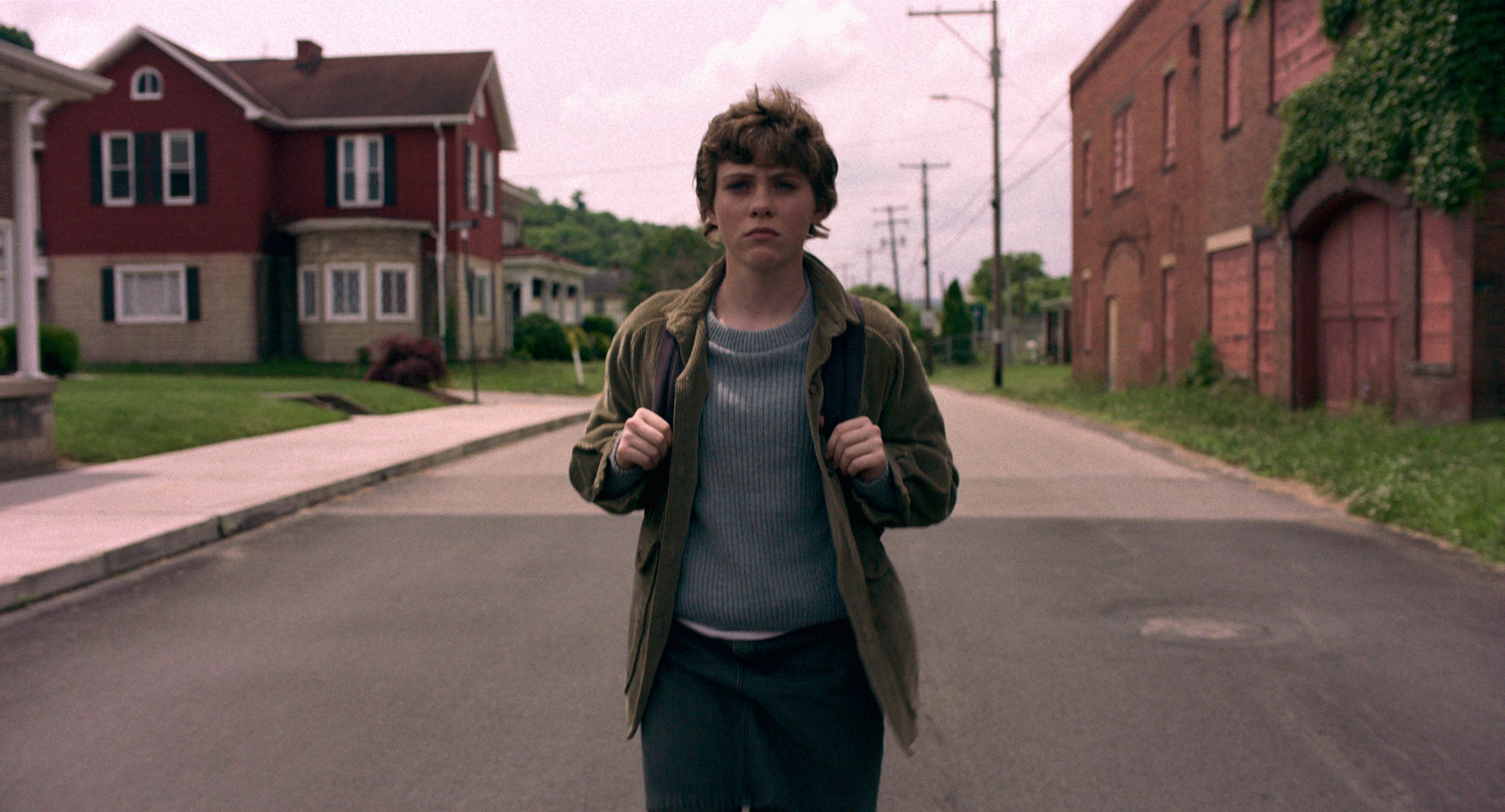
GORSKAYA; Some of the flash-forwards and flashbacks were retrofitted to create a unified tone so that it wouldn’t be quite as shocking when you got to the final episode. And then I think a lot of shoe leather came out. Not that there was a tremendous amount of shoe leather, because Jonathan has a very planned way of working but we ended up combining two episodes and cutting one down significantly because it felt like the story wasn’t getting to where it needed to get as quickly as we liked when we saw them all laid out.
We felt like maybe this isn’t as important as it had seemed in the writing process now that we can actually see where we get to by episode four or five — that we want to get there quicker and that maybe some things will have to go by the wayside in order to do that.
So that was something that came out of being able to see the entire season.
McMASTER: We kind of watched them all in a row that first week when Jonathan came in. Didn’t we?
GORSKAYA: Yeah, we did.
McMASTER: It felt more like editing a whole right from the get-go.
GORSKAYA: That was actually baked into the planning of how post was going to run. When I first met with Rand Geiger, who was our producer, he said “I’m planning this as a feature workflow and the episodes would be pieces of a feature.”
So it would be really important to have a sense of the entire arc of the season. I think Jonathan thought of it that way too — that this was a movie that was cut into pieces, so we needed to see all of it to shape each act up of a larger story.
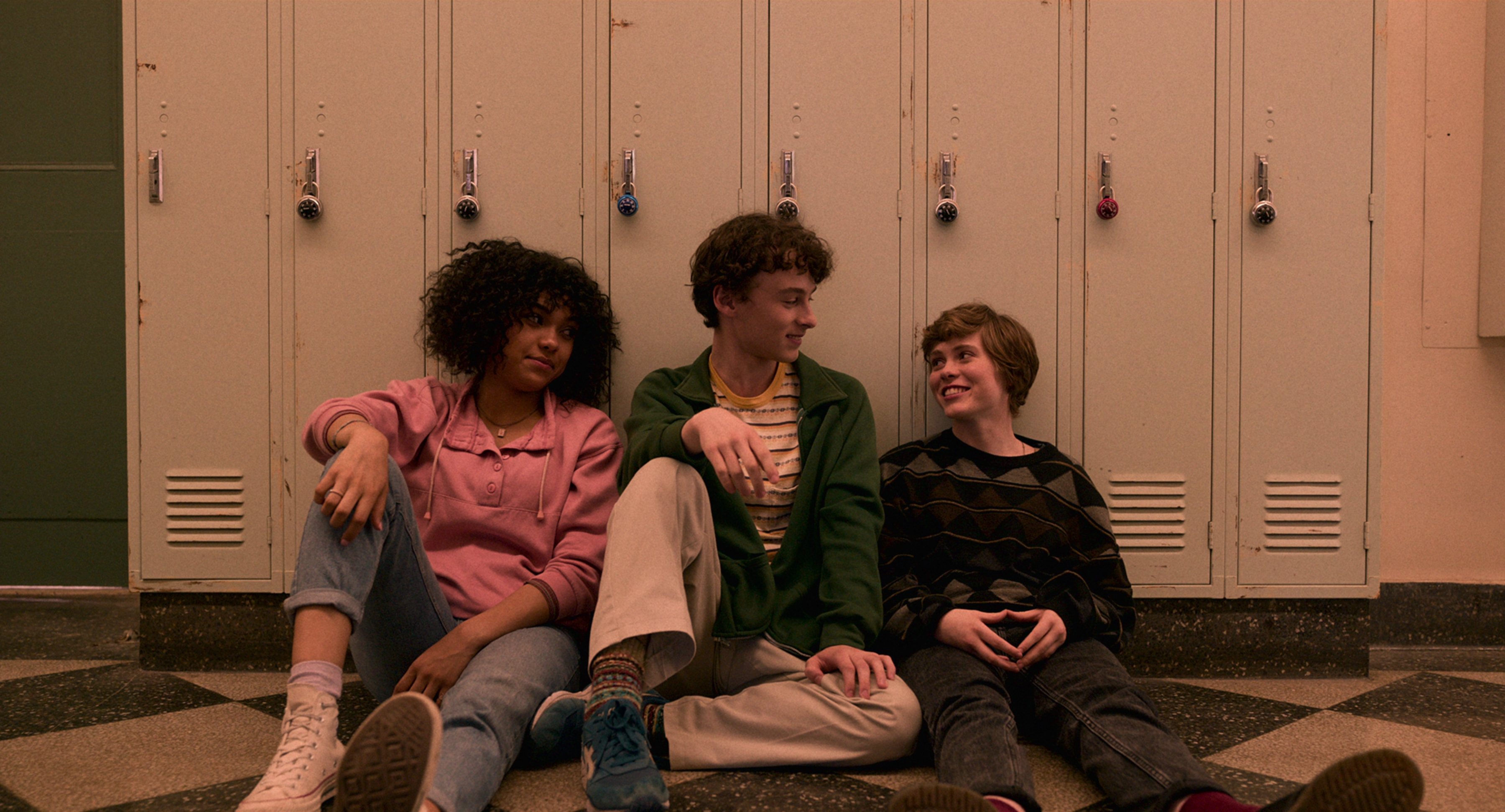
HULLFISH: More and more of these really great streamed shows are feeling like a movie cut into pieces. That’s the sense of it more than episode, episode, episode.
McMASTER: It’s a very satisfying trend.
HULLFISH: In I Am Not Okay With This, Sydney is very uncomfortable in her own skin. Do you have to edit that performance differently than if she was comfortable in her own skin.
GORSKAYA: Definitely. But I think that’s where our deadpan sensibility probably comes in handy, because we like the awkward silences and we find them funny and endearing.
HULLFISH: Absolutely.
GORSKAYA: And so that was a natural fit for that character: letting her listen just a little bit longer than she needed to before answering a question.
Sophia (actress Sophia Lillis, who plays Sydney) has the most amazing face and her eyes are doing so much that thankfully you can sit on her without it being completely blank. She’s a tremendous listener.
HULLFISH: That’s exactly where I was going with that. The pacing of cutting a performance is very much based in what you’re trying to get the character to feel like. If you’ve got a very smart character, as soon as somebody says a question that character is answering it because they’re so smart. Like if you’re doing Sherlock Holmes.
With Syd, she’s very unsure of how she should answer, what this person is expecting of her, what is the normal thing to say? So you don’t want her to jump on the next person’s line. You’re giving her that weird awkward moment. I love that.
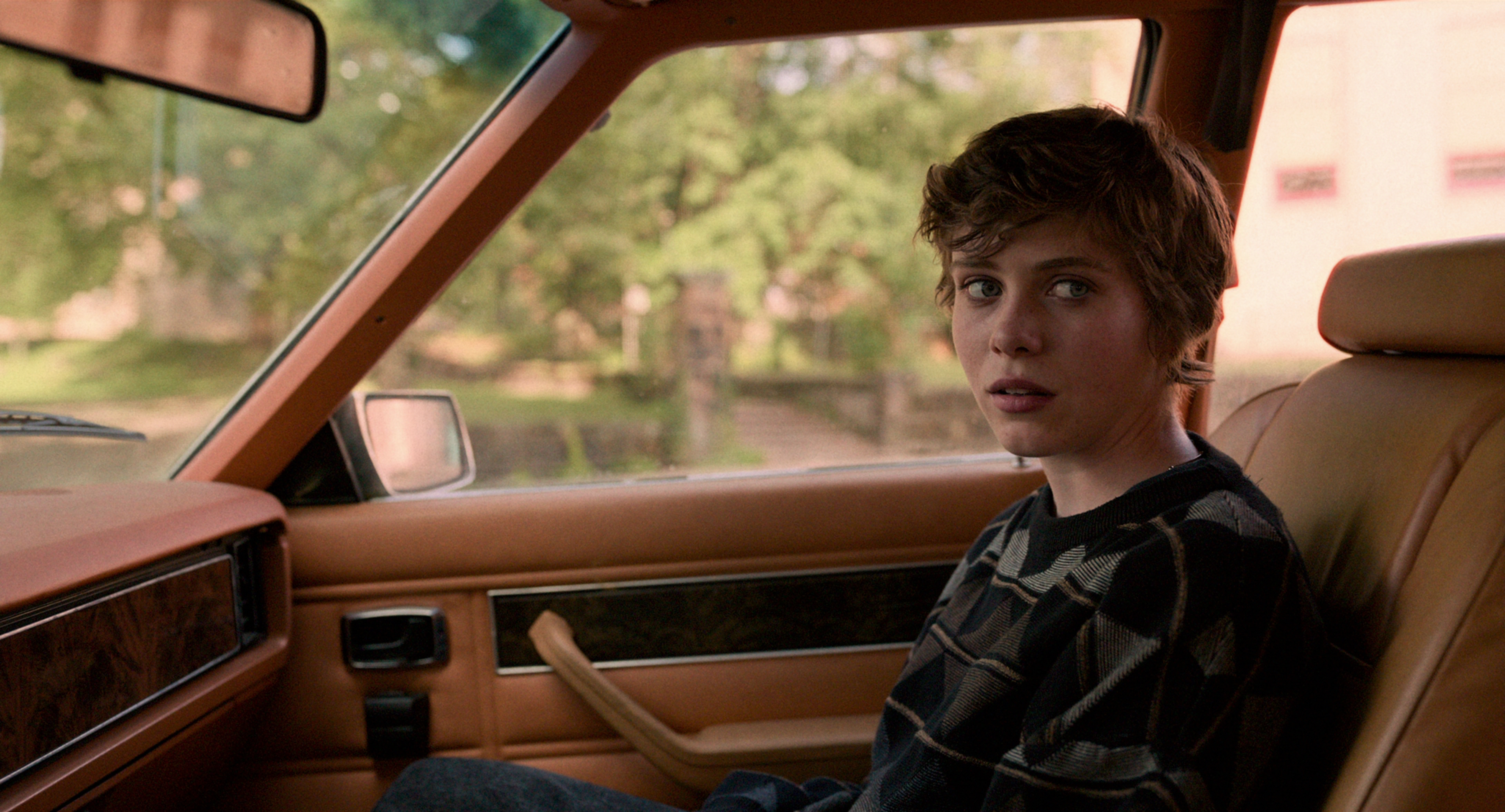
McMASTER: That rhythm is — to a certain extent — informed by her performance in the dailies. Obviously we will always have to compress time within a scene, the way it’s filmed, but even compressing time I feel like your editing changes because of what she is doing in the dailies.
It was something that felt natural. I don’t think we ever really talked about it, Yana.
GORSKAYA: No, but I also think we have always cut a little bit that way. The listening part is the best part, and even when we’ve had to stick to a very strict time frame and chop stuff down we’ve always protected for a really great awkward silence.
HULLFISH: You find the one awkward silence that’s the most important to save and you save that one.
McMASTER: Yes absolutely. Always protect the really long one. I’m a sucker for really awkward silences.
The first show that Yana and I worked on together — Review — is full of uncomfortable things.
HULLFISH: So were you two gifted with some huge playlist?
McMASTER: Obviously with Jonathan and his first show, The End of the Fucking World, there’s a wonderful selection of music in there. With this, when we first talked with Johnathan, we asked about that upfront because we wanted to know if music was something that he was going to be very specific about.
He sent this ever-evolving playlist through Apple music. He would add things to it as he was shooting and we would work from that. That would generally be our first port-of-call.
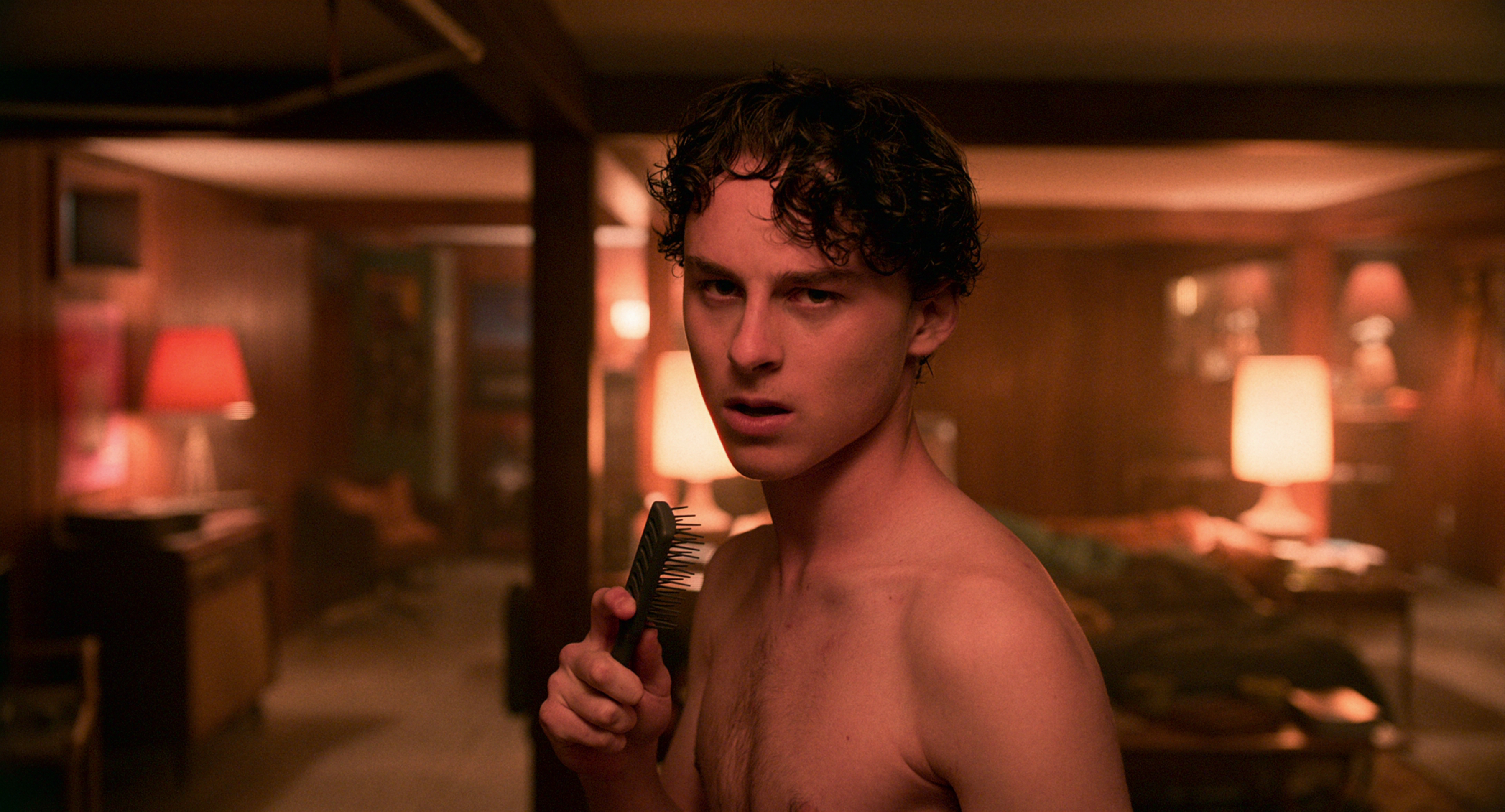
GORSKAYA: But that kind of set us off into understanding his voice and the kind of music he liked. So Dane and I both did our own research inspired by that playlist and then also our music supervisor — Nora Felder — sent us just pots and pots of wonderful stuff.
But it was all guided by that initial playlist.
HULLFISH: Lots of music. A lot of it with lyrics. How do you keep the lyrics from competing or fighting or landing to speak into the moment? How much did you have to edit the tracks to get them to work properly? It’s just way harder, I think, with lyrics.
GORSKAYA: Well that was the other advantage of having the entire season before we had to lock. We could shape things around specific songs and try a lot of different songs. We tried — in some spots — dozens of songs before we felt like we hit the right one. With other spots, we tried something and it was never changed because it was so perfect.
The person we definitely need to talk about is Graham Coxon who was our composer and also the composer for The End of the Fucking World.
He was one of the original founding members of Blur. Just an amazing musician and musical mind and he came up with an entire album of material for this fake band in the show called Bloodwitch. It only elevated the show the more of his material that we got in.
And similarly on Shadows, we have Mark Mothersbaugh, so we got the best people. Musically we’re covered!
McMASTER: On Shadows, we have another editor that we need to talk about, because Yana directed two episodes of Shadows this season.
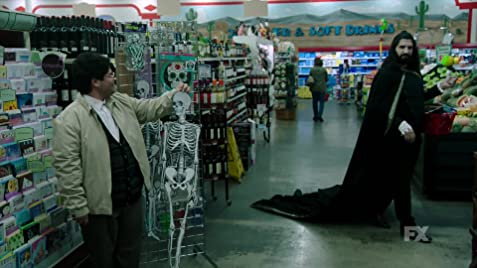 So when Shadows started, Yana was finishing I Am Not Okay With This and then she was prepping for her episodes on Shadows as a director. So we had somebody who we’ve worked with before edit for the two months of the shoot before Yana came back. That was Daniel Haworth.
So when Shadows started, Yana was finishing I Am Not Okay With This and then she was prepping for her episodes on Shadows as a director. So we had somebody who we’ve worked with before edit for the two months of the shoot before Yana came back. That was Daniel Haworth.
GORSKAYA: He’s awesome!
McMASTER: Daniel is awesome. We’ve worked with him in the past. He has an editing credit on three of the episodes.
GORSKAYA: Well-earned.
HULLFISH: Just as well earned as your two directing credits, I guess!
GORSKAYA: Thank you. I feel good about them.
HULLFISH: I have directed some things and I feel that when an editor directs it’s easier to edit those things.
McMASTER: Yes. I’ve been in the position of editing a lot of things for directors who were editors and it’s always a little scary.
Yana’s directing is wonderful. I had edited one of her episodes on Season 2 of Trial and Error. I would say the hardest part is just the pressure of editing for somebody who you respect and you want to do a great job so that there is that pressure.
Once we get into her director’s cut, it’s really no different than when we pass things back and forth on a regular episode.
GORSKAYA: We speak each other’s language so it’s pretty smooth.
HULLFISH: I want to ask you about some specifics because specifics can often reveal a lot of really great informative stuff — which is the reason why I do this.
In Episode 3, the funeral for the hedgehog was brilliant. How much of that was scripted and what kind of direction were you given on that scene ahead of time and how did it get to its final form? It just felt like it might not have been scripted.
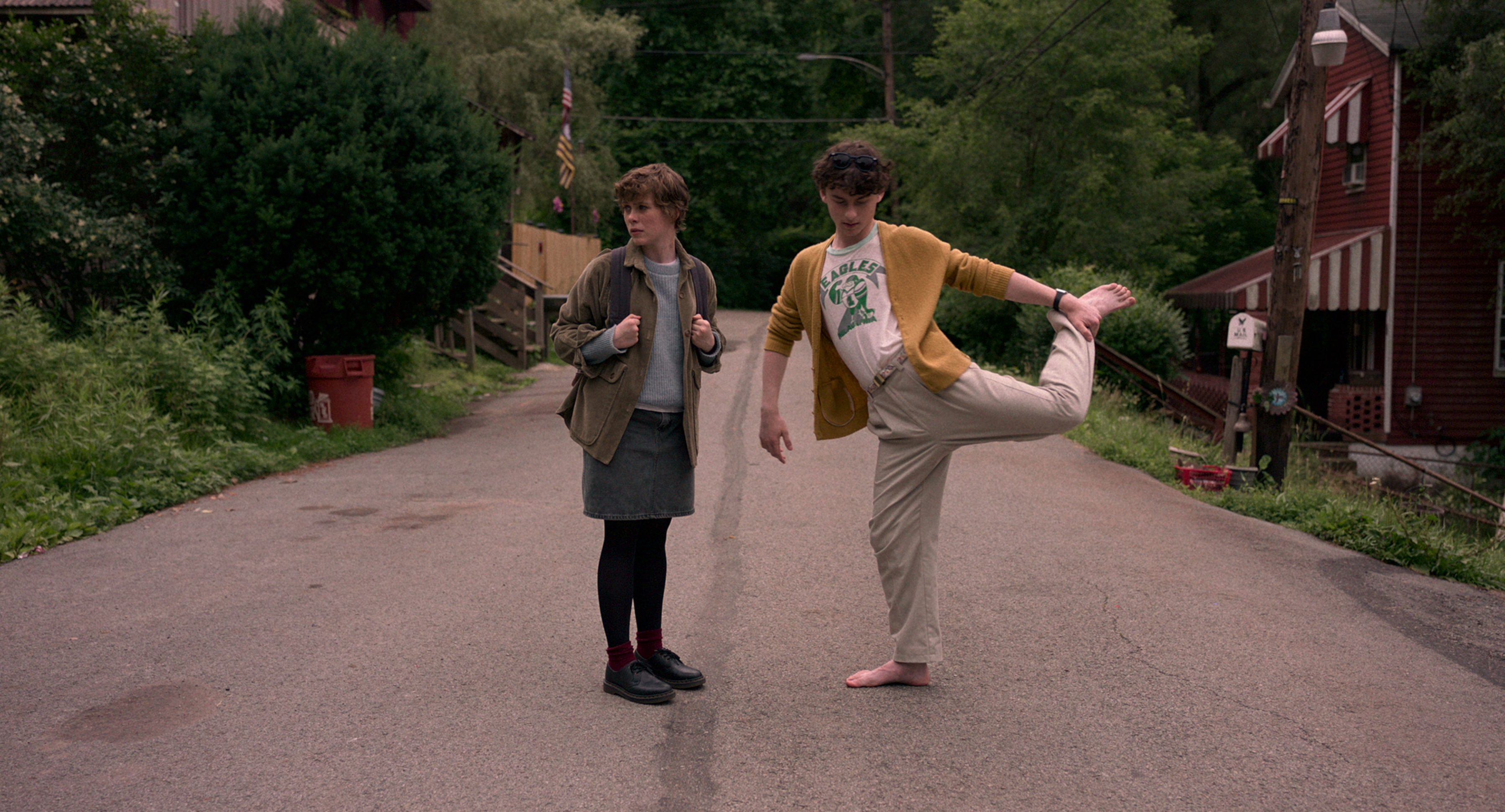
McMASTER: That’s nice that it didn’t feel scripted. It was scripted and it was much longer in its original form. That would have been one of the moments that we had to compress whenever we were putting episodes 3 and 4 together into one episode. But it’s great to know that it feels so natural. And the music on that went through a number of iterations.
GORSKAYA: We tried so many songs. That was one of the places where we were wondered, “What is the best joke?” But sometimes the best joke would be a song that had been played a lot in other television shows or films and we wanted it to feel a little bit fresh as well, so finding that perfect song was a trick.
HULLFISH: I Am Not Okay With This has — for those who haven’t seen it, please watch it. You will love it — it has a lot of this girl, Syd, talking off-screen (voice-over or voice-under.) It’s like an inner monologue. Sometimes it’s her reading her diary.
You’re hearing a lot of her where she’s not actually on-camera speaking and I did a bunch of scenes like that in a movie and I knew that when I cut those scenes I didn’t want to have to do it with my scratch track. I didn’t want to cut it for months using my voice. I went on set and directed the actor to read all of that stuff that I knew would later be recorded as voice over.
Did you guys have her actual read when you cut those scenes?
GORSKAYA: Yeah. We put in a request and they knocked it out on set so we had her scratch recording but then oftentimes you find that you don’t need quite as many of the words or you need different words. So a lot of that voiceover got significantly reworked in editorial and then we would do these long ADR sessions with Sofia nailing the performance and getting the wording right and making it feel natural and adjusting it as necessary.
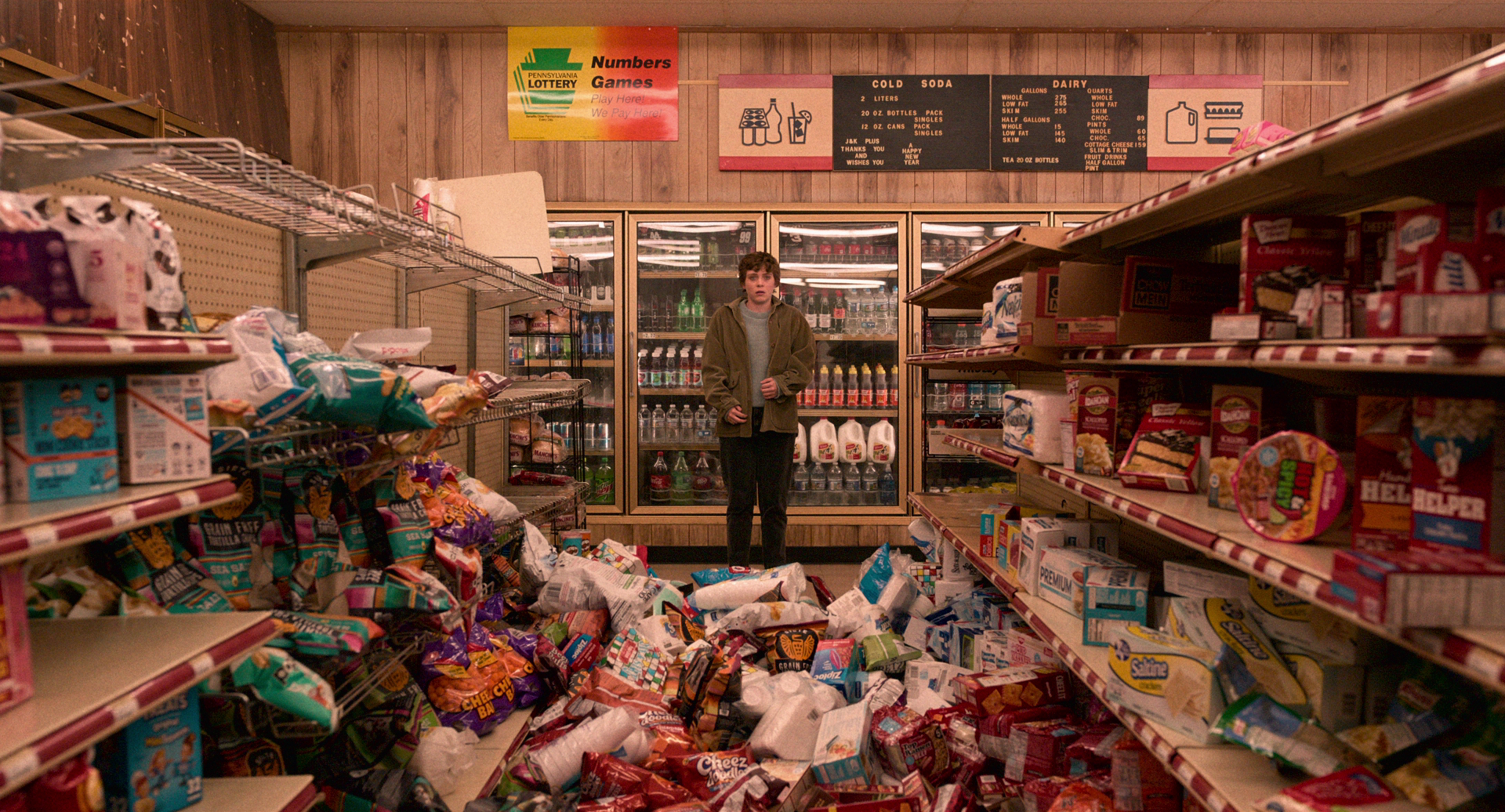
And we did more than one session like that trying different things and shaping picture around it. We had the luxury of a really healthy schedule so we could play and really chisel things.
But yes, having her scratch track was so much better than… Mine! (laughs)
McMASTER: Yana does very good ADR.
HULLFISH: Let’s talk about the challenges of getting TV to time. That’s not something you really have to worry about on a feature or doc. What tools are you using to hit your required run-length.
GORSKAYA: In Shadows sometimes we will need to compress story or clarify things so we’re constantly looking for art and drawings and reworking voiceover to get us through quicker and funnier. That’s a huge part of the editorial work on Shadows: finding funny paintings.
And thinking of it as a documentary, because the show is a documentary. So how would you — if this were a legit documentary — convey this piece of storytelling? Some of that is written in the script. So they’ll reference art and things like that, but a lot of that is just us having a good time with it.
Everybody on this show has gotten a degree in researching art. And Holden Ward has some mad photoshop skills.
HULLFISH: In a scene where Syd and Dina are getting ready for a party and Syd is telling Dina that there might be something wrong with her, did you cut that mute and then design the music to match the visuals or cut the music early to motivate the cuts?
McMASTER: The Lemon Twigs were there from the very first cut. We refined the scene with Jonathan and at some point we did the flashbacks, which was later in the process.
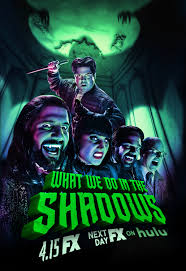 GORSKAYA: Yeah. That was another director’s cut.
GORSKAYA: Yeah. That was another director’s cut.
McMASTER: Both of us work with audio quite heavily. I find it very difficult to cut a scene without polished audio and part of that is because I spent a lot of time cutting trailers years ago. I was taught to do the audio first. Once it sounded like a trailer, then you would move on to picture.
That still informs how I cut scenes. I kind of work very heavily on audio and audio performance.
We’re both good with music but we wouldn’t necessarily cut the rhythm of a scene to music even though….
GORSKAYA: I would! (laughs) We do have a similar attention to sound effects and so we do a pretty full sound effects pass, which then our amazing sound team goes and makes significantly better, but we’ll never present something to a director that’s dry.
All our backgrounds are in. If there are falls and action bits, those are designed and our assistant editors will also take passes on those, but it’s fully done before anyone sees it.
HULLFISH: Can you think of why I might have had that note?
McMASTER: Well, that music has a very dreamlike quality to it. I think it may just be a perfectly matched piece of music for that scene. Sometimes when two things go together they can create that impression
GORSKAYA: There were pieces of it that we kept married to the same moments because we felt that they hit well towards the end, emotionally with what was going on with Sofia and her face. So, whenever we rolled that edit, that part stuck. We were really careful to protect that because it just had a nice emotional quality with what was clearly going on in her face.
HULLFISH: The opening for episode 4 has Stanley dancing and preparing to go to a dance and it’s a series of jump cuts. It’s just a frenzy of jump cuts.
GORSKAYA: I wish I could edit that for the rest of my life! (laughs) That was probably the most fun I’ve ever had. Dane certainly played with that also. It was so joyous. They spent a day just shooting everything for that. Wyatt Oleff — the actor who plays Stanley — just committed fully. Had no shame. And was a surprisingly excellent dancer. (laughs)
It was just joy. And they did so many takes of the full song in so many outfits and so many situations. So Dane and I laid them on top of each other and just synced them out to the song and tried different pieces with different beats of it. That was just pure pleasure. Maybe I should go be a music video editor because I had so much fun.
HULLFISH: It looked like it was a blast to cut.
Talk to me about flash-forwards. The flash-forwards started with the very first image of the very first episode actually, right?
GORSKAYA: Yes.
HULLFISH: And then you continue that through the whole series. Talk to me about trying to get in and out of those. I’m assuming they were all shot at the beginning.
McMASTER: That was as-scripted. They weren’t shot as a part of the end of the season.
HULLFISH: A scene.
GORSKAYA: It was scripted there, but they weren’t scripted most other places. But it was tracking the shape of the whole season and where we end up and making sure that we build to that. And also because we had these almost entirely practical special effects that felt like they needed more internal build. And so we built in more and more of these flashbacks as the season progressed and took shape. I think it was Jonathan’s suggestion, to begin with — to use more of those.
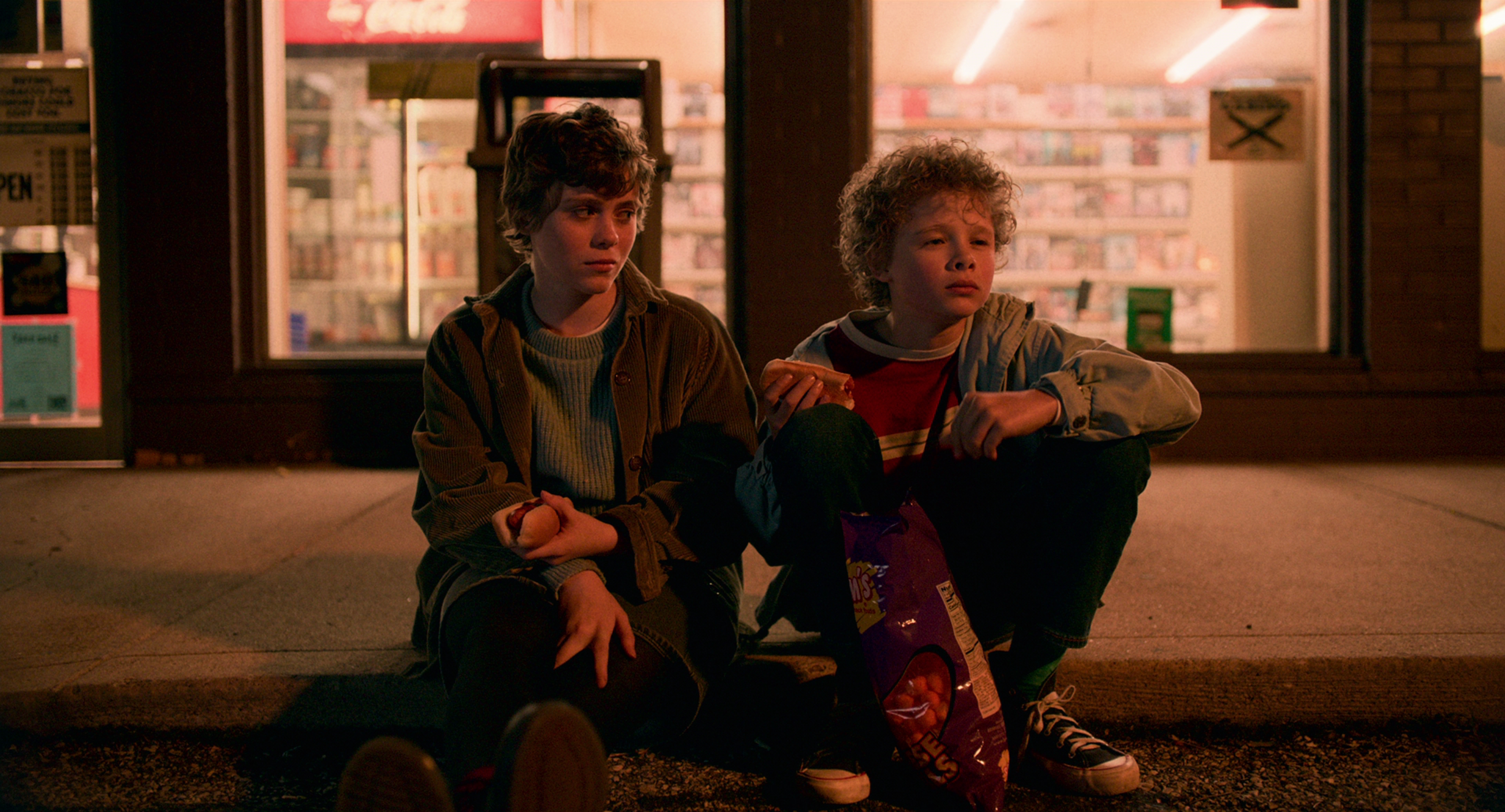
Those very first ones were scripted and then we just kept playing and it really seemed to help land the kind of frenzy of her internal experience the more we used them.
HULLFISH: Music almost always seems to bridge scenes. Is that just the way it felt right? Or a trick you like to use? Or just the way it happened?
GORSKAYA: It is a music-driven show. The show has a beat to it, and so the music in between helps score those beats. It just felt natural to add them.
HULLFISH: Which were the episodes that were combined?
GORSKAYA: Episode 3 used to be episode 3 and 4 and had some scenes that were lost to continue the momentum.
HULLFISH: There’s a scene in episode 4 I think where Syd hasn’t really figured out whether she has superpowers, or if she does, how does she control them? So Stanley is trying to get her to control them and there are three challenges that he offers her: knocking over bowling pins, knocking over beer cans, and popping popcorn with her mind.
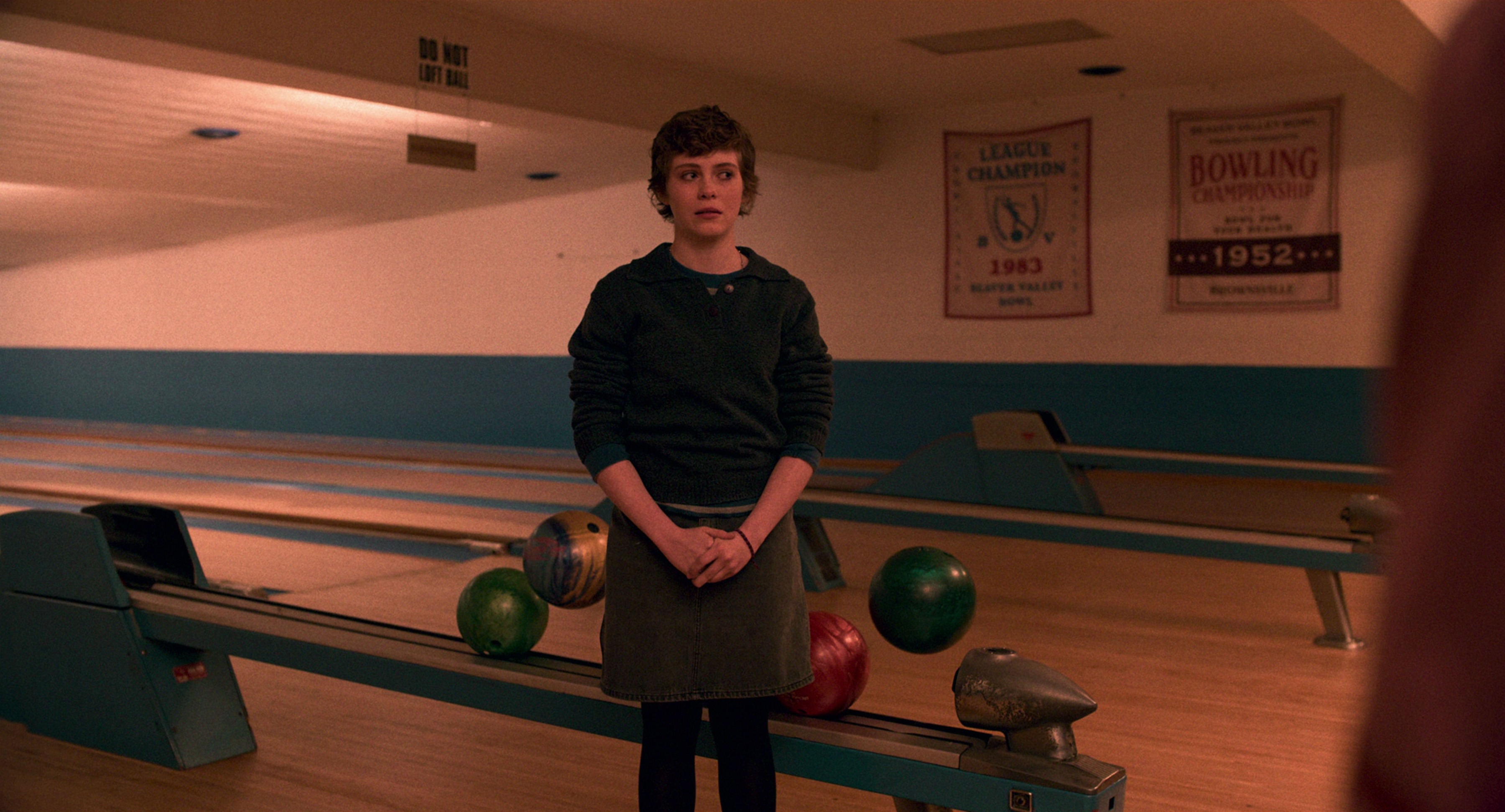
Those three challenges were intercut. Were they scripted as three separate scenes?
GORSKAYA: The song was scripted. The challenges were scripted. The intercutting was not.
McMASTER: The first cut we did they didn’t intercut. It didn’t work. So we must have intercut them fairly early on in the process.
GORSKAYA: We definitely intercut them before we sent it to Jonathan. When something feels like it will benefit from that, you do it.
With Dane coming from trailers and myself coming from documentaries, neither of us are married to the script. That’s part of what makes it a good collaboration. We have always worked with EPs who seem to enjoy being surprised.
McMASTER: I would say that I don’t ALWAYS do that. If the job does not feel like the kind of job where I have the freedom to do that, I don’t. But where I would use it in a more conservative way is in looking at all of the dailies and knowing that maybe the camera stopped rolling and a reaction can play over here. Yana will do that too. It’s not always completely rewriting something.
HULLFISH: The intercutting was fantastic and it kept the energy up and probably allowed you to drop things you didn’t really want and didn’t make it feel like it was episodic in nature.
There’s a lovely moment where Syd and Stanley are sitting back to back against the bowling ball return and Syd is telling about the kiss and I love the choices to be on the reactions. Often playing the lines off-camera instead of on. Let’s talk about choosing reaction shots and when to be on somebody speaking on camera and when to be on a reaction.
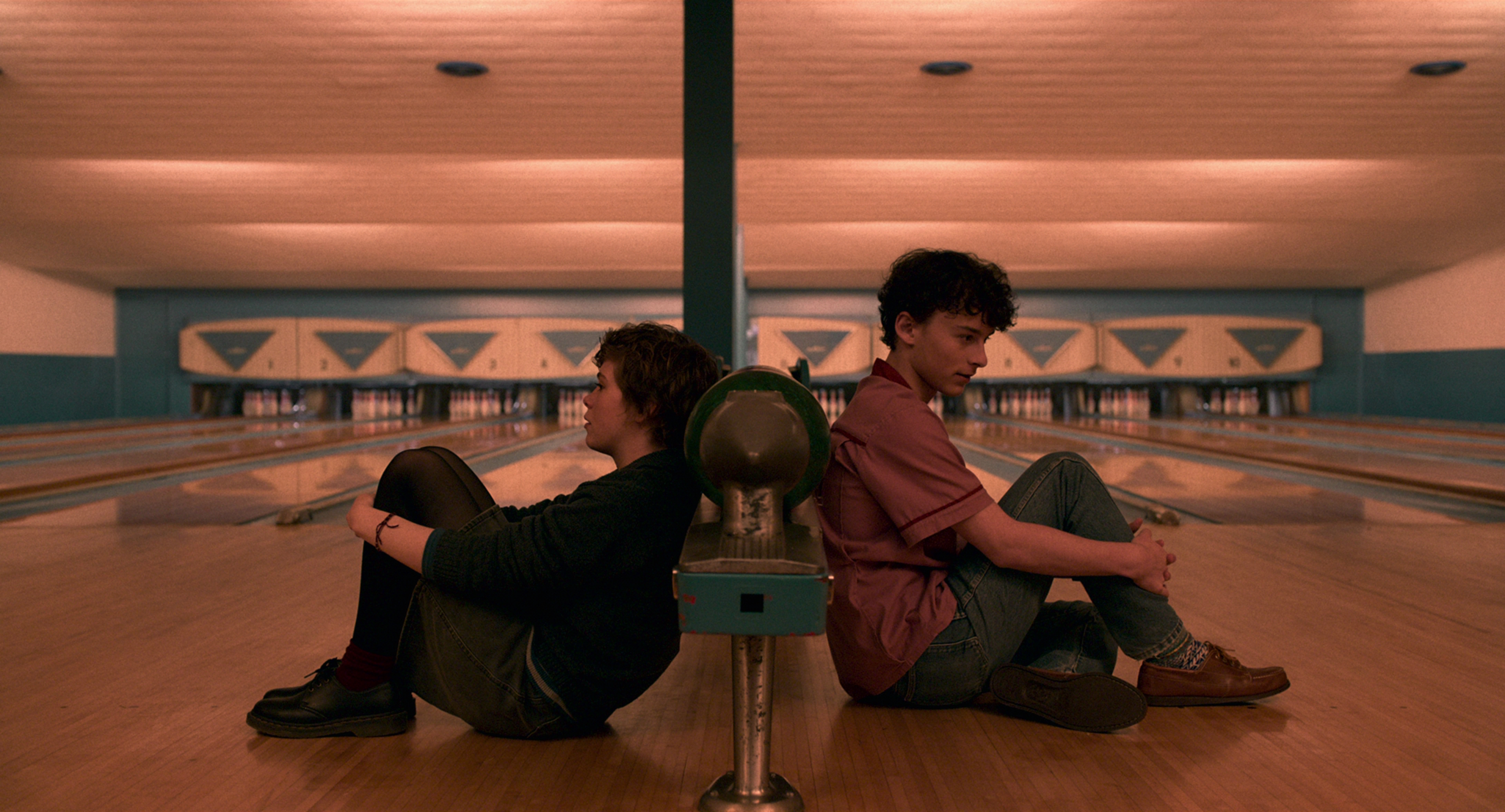
McMASTER: For me, that’s a very instinctive process. One of the reasons I love to read your interviews, Steve, is that people articulate things and I think, “Oh! That’s why I do that! That makes sense.”
If Yana showed me a cut, my notes would be very top level. I need to take the cut and play with it to find the ideas; whereas Yana can watch a cut and give you 10 notes that make it better verbally.
So with that scene, I imagine it was just a process of what felt right for me and then the same with the Yana.
GORSKAYA: In both of these shows we have actors with great faces who do wonderful things. They don’t always do them at the exact same moment as they are scripted in the moment to do that. So that’s why we watch everything.
Also with Wyatt and Sofia, they’re phenomenal listeners and they have very expressive faces, so sometimes just hanging on them LISTENING had an emotional quality that hanging on them TALKING did not. So I Am Not Okay With This actually has a lot more listening footage than most things I’ve cut because of the strength of the listening.
HULLFISH: So it probably causes a lot of pre-laps or post-laps, I would think, because then they say something and you want to see them reacting to the next person speaking.
GORSKAYA: Yeah. But also just watching the dailies, the ones that I think moved me — and I imagine Dane also — were the moments of listening seemed to be the strength.
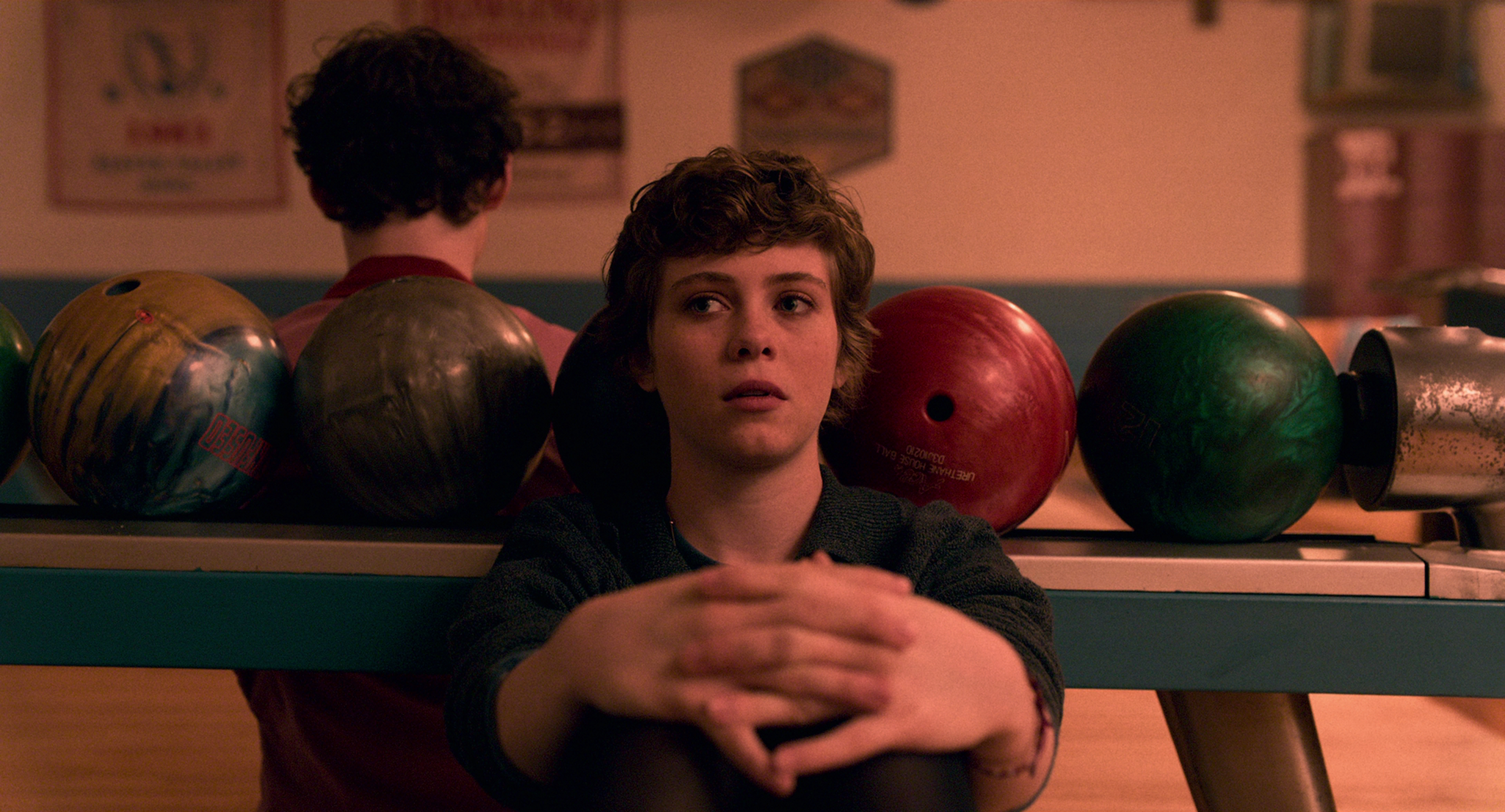
McMASTER: I think it’s a case again of those things naturally rising to the top because you are drawn to that moment. So the performance is informing the edit and where you’re shifting around. But that show more than most I think.
GORSKAYA: They’re very keyed in and thinking. I can see them thinking. They never turn off in the scene, so watching Wyatt take in the fact that in some way he’s been cheated on and watching those wheels churn. Watching Sofia take in the fact that she’s obviously hurt him. They both were incredibly present and thinking about those things in real ways to themselves.
HULLFISH: I love both of them as actors and what I was thinking about with that scene was that I’m sure Wyatt’s acting was fantastic — whatever he did as an actor. But you chose to be on her which was also fantastic. It’s not like you just have to choose the GOOD one. You’ve got to choose the BETTER one.
GORSKAYA: To make that choice, there was an expression that a director I worked with early on used that has always stuck with me. Dane and I use it in editorial which is “following the red dot of a scene.” So what is the scene about? And making sure that you’re taking the viewer through the red dots. So the red dot is Sophia’s uncomfortableness, not his jealousy.
So making sure you’re threading what the emotional take of the viewer is supposed to be. “Red dot” can sometimes also be story — are we missing the fact that something here isn’t landing and won’t make sense?
So we often talk about that.
HULLFISH: Is knowing where the red dot is in a scene something that anybody gives you direction on before you start editing?
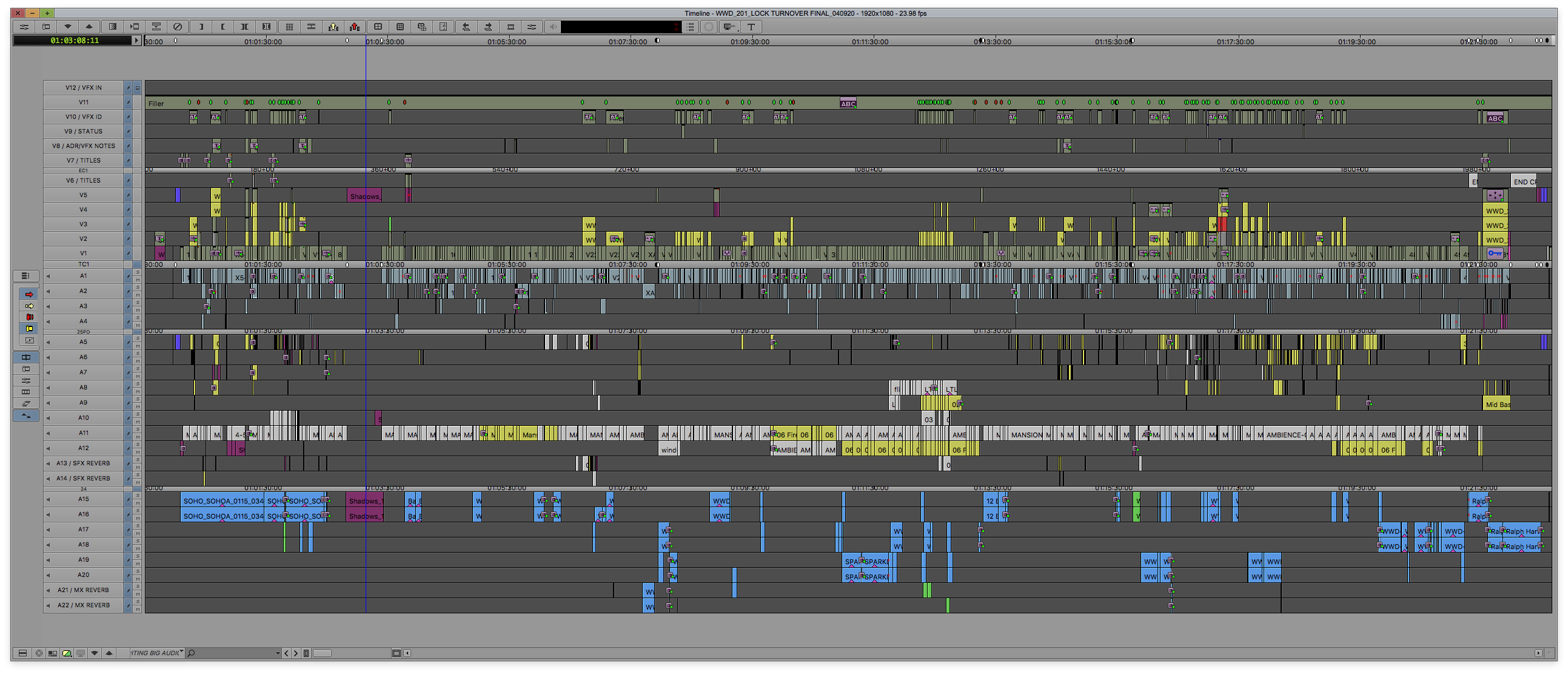 GORSKAYA: The very first feature that I cut was a documentary about the National Spelling Bee. My experience in editing that was sitting with the director — Jeff Blitz — and him telling me the story of meeting each of these individual children that were part of it. He was such a wonderful storyteller and had such a clear point-of-view on each of those experiences that I took that into looking for the material that would support that version of his experience.
GORSKAYA: The very first feature that I cut was a documentary about the National Spelling Bee. My experience in editing that was sitting with the director — Jeff Blitz — and him telling me the story of meeting each of these individual children that were part of it. He was such a wonderful storyteller and had such a clear point-of-view on each of those experiences that I took that into looking for the material that would support that version of his experience.
So that was incredibly useful and sometimes on these shows when the schedule permits it and when we do have time to sit and say, “This is what I found really funny” or “this is what I found engaging about the story,” that is so useful to us as editors to be able to say, “OK, we can ignore that part. That’s not the red dot. This is what he liked or she liked” and to shape around that. That’s such a pleasure.
HULLFISH: Lee Smith talked to me about the fact that sometimes if a director just can give you one note — like “here’s the red dot for THIS scene” you can interpolate those red dots through the rest of the scenes.
GORSKAYA: Yeah absolutely.
HULLFISH: One note can provide directions for multiple instances.
McMASTER: Because of the nature of the schedule of television and having so many episodes, we generally don’t get lots of notes beforehand. But sometimes you do, and they’re very useful.
A director may shoot you an email just saying “I got X Y and Z and just focus on the z.” That can be super helpful, but generally, we don’t get a lot of stuff upfront.
GORSKAYA: It is super useful to me to know what people were responding to and enjoying, but on the other hand the worst thing you can hear is: “Everybody loved this on set!” Because that almost always dies in editorial because it was big and broad and that’s why it played.
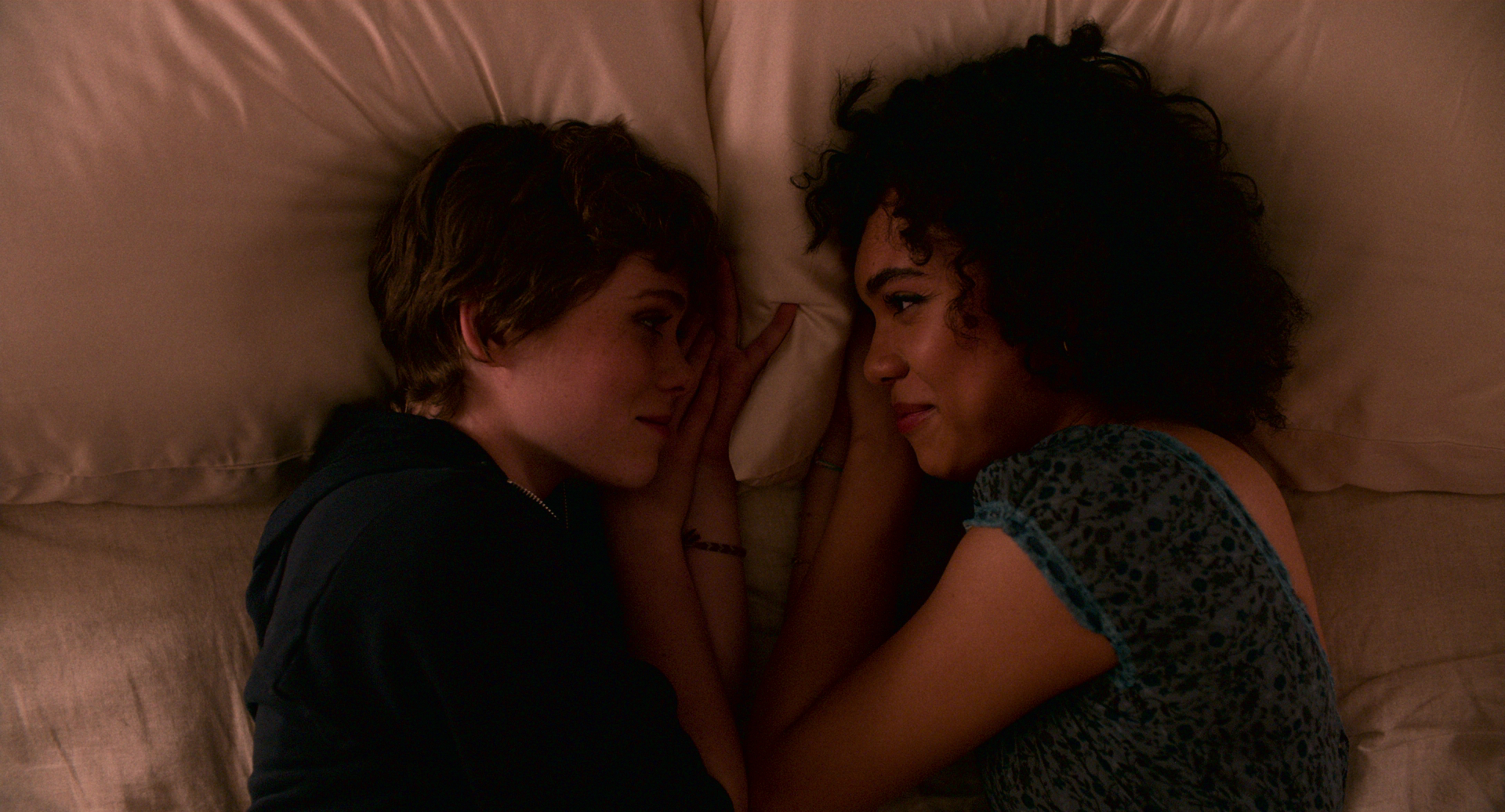
McMASTER: I think there is a legitimacy in not having any knowledge of the scene — certainly with script notes. I don’t look at the script notes until after I’ve done my pass and then I see what the director liked as their favorite take or if there are any specific moments called out and I will then do another version of that scene. But I think it’s useful at times NOT to have that direction.
HULLFISH: Well since we have an eminent director among us I will have to ask her, don’t your choices change? The things that you may have told the script supervisor, “That’s the take” or “I love that.” Then when you see it off-set….
GORSKAYA: Yeah.
HULLFISH: Feelings are different?
GORSKAYA: Of course they are and that’s why editors are useful. Dane’s take of what to pick might not be at all what I had in mind in the moment — as the thing that I thought was the clear choice on the day.
I would do these very elaborate emails and text chains at the end of every day that I would send to Dane because I always wish I’d get those (laughs) and as a way of kind of unloading what I think I did right and what I did wrong and “help me here.” Trying to help him save some time.
He absolutely would surprise me with his choices and they were right. So he had the benefit of a quiet room and not the pressure and distractions.
HULLFISH: It could be anything. You could have been looking at an extra in the background that you didn’t like or somebody just said something bad to you just before the take and it affected your emotions from something external.
GORSKAYA: Which is why we watch every frame.
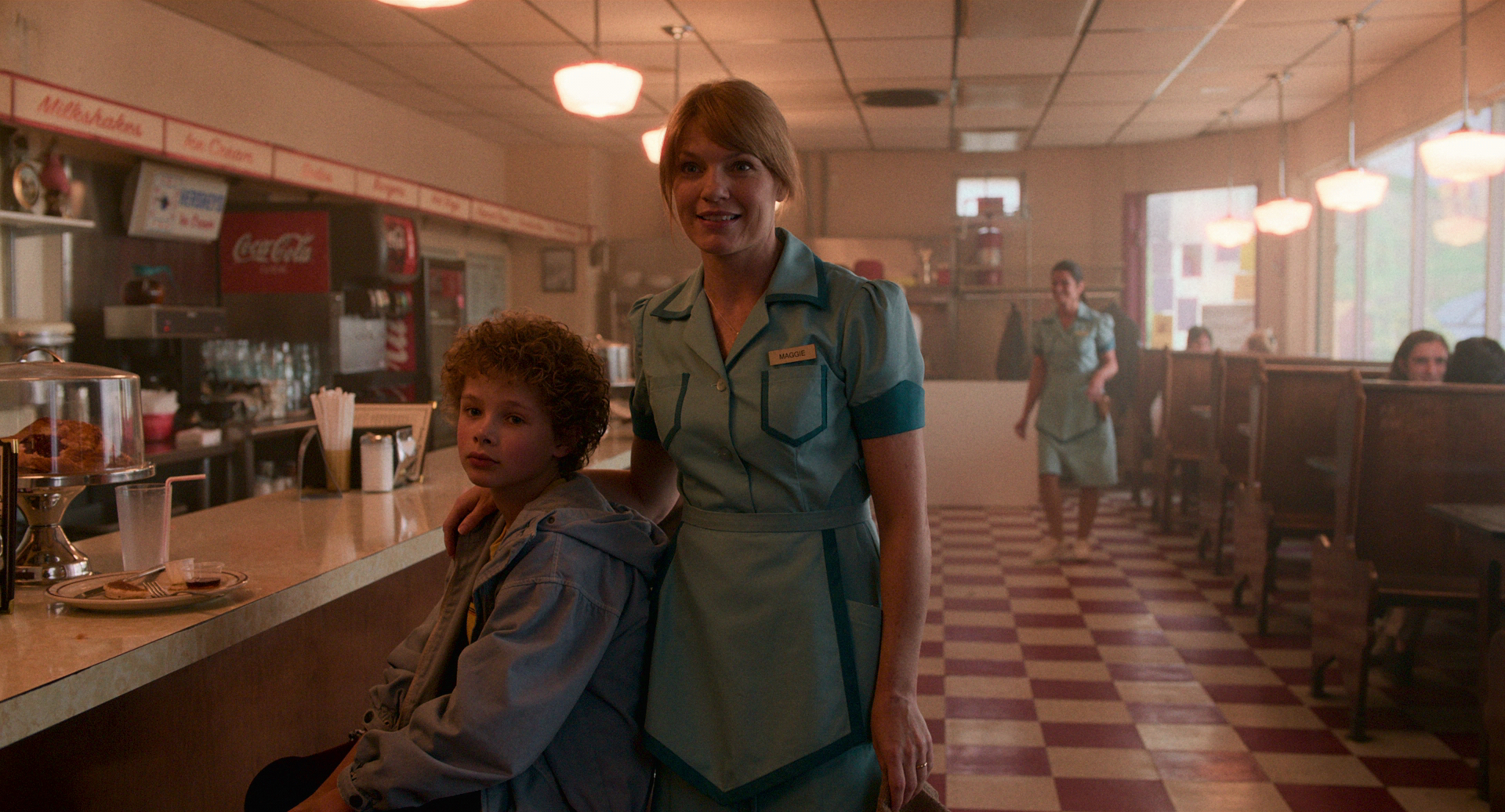
McMASTER: There could be just that one reaction in take one that nobody circled and it’s gold.
GORSKAYA: Or one great deadpan reading of a line. Yeah. So we watch everything and dig from everything.
HULLFISH: That’s a little bit about workflow and the project though, right? Because some projects you do need to be up to a camera or you’ve got 10 hours of dailies and you still have to cut 4 scenes by the end of the day.
McMASTER: I’ve only had one experience where I had to say, “We don’t have time. We can only look at the circled takes and we’re gonna have to rely on the director or the EPs to call out moments that we may have missed.” But that was early on in my career and thankfully I haven’t come up against that since.
I try to make time to watch everything because it feels like that’s how I do my best work. Yana and I have been fortunate on most of the projects we’ve worked together where we do have time to really dig in.
HULLFISH: And I’m not saying that any editor doesn’t do that. But, for example, I think Dan Crinnion was talking about sometimes changing his approach so if you’ve got a 10-minute dialogue scene, sometimes he might just pick the best take of each person and cut back and forth between them to get a sense of the scene because then at least he has something to watch and get his head around.
Then you can say, “OK, now let’s look for better takes. Now let’s look for reactions. Seeing this, when do I want to be on a 2-shot.”.
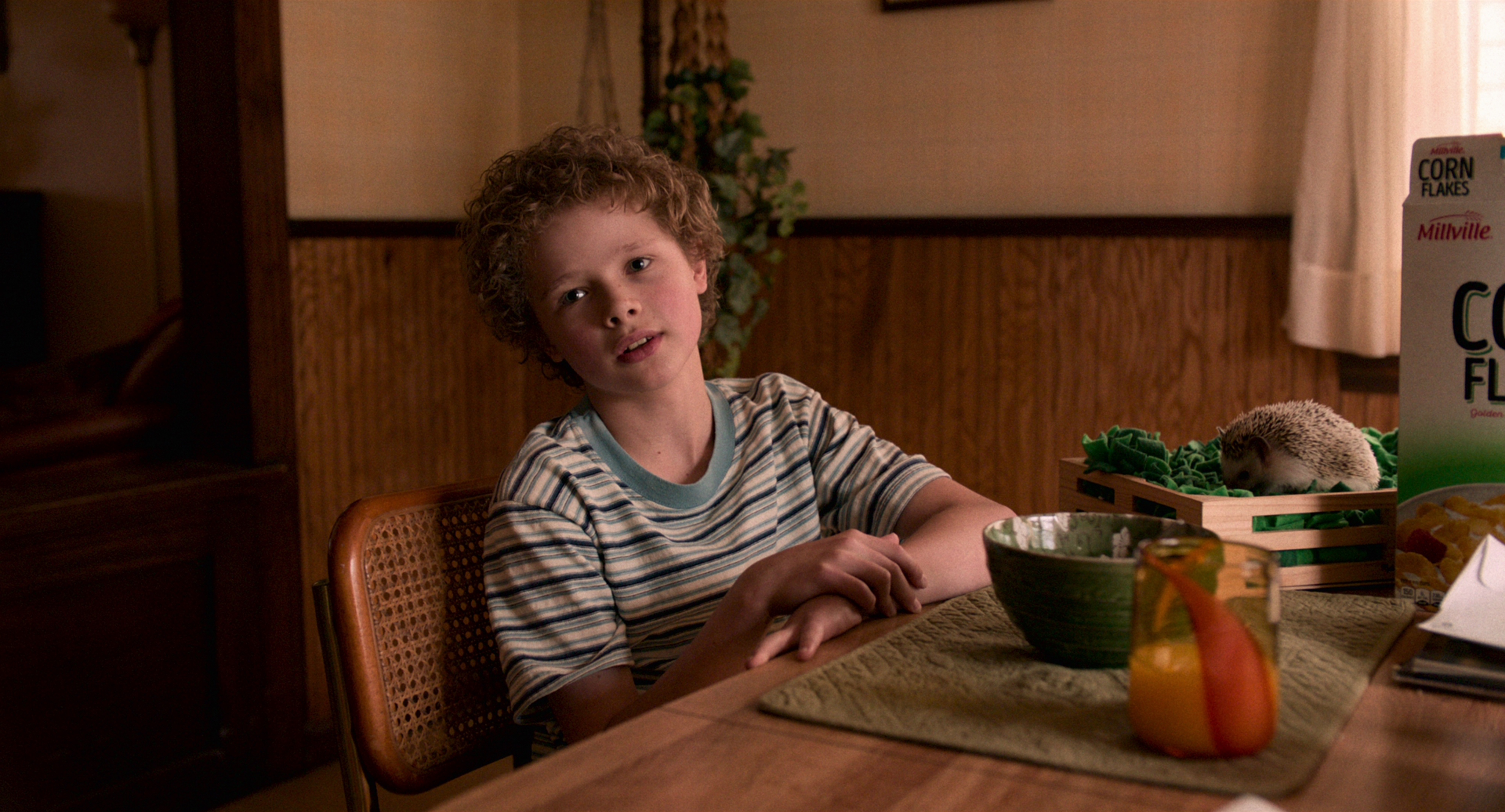
McMASTER: That’s certainly something that I’ve done in the past. Sometimes just to shake up my workflow I will cut a scene with the final take — if it’s just a simple scene with two cameras. I’ll just live cut it so I can start with 90 seconds or two minutes that’s there, and then I go back and I’ll evaluate every moment within that.
That can definitely be helpful.
GORSKAYA: I watch in reverse order — last take first and work my way back. Although I’ll sometimes watch the last take and the first take just to see what the evolution was and see if they shook things up for a reason and I need to watch for that.
But usually you’ll find things from every take in a longer scene. I want the best reading, but it has to flow together. It has to feel organic and performances need to match so sometimes that means you end up favoring a couple of takes.
HULLFISH: Do you have to watch all of the takes at the beginning — knowing that it’s a process that’s going to take place over weeks or longer? Does that affect you if you put in just the circled takes in a rough cut? Does that lock you in?
GORSKAYA: I like to watch everything. I want to make sure that we’re giving the best from our judgment of what the best is.
But because we do have this back-and-forth workflow, when I take a scene that Dane has cut, I’m not watching every frame of those dailies. I’m trusting that we have a great rapport and he’s a wonderful editor and makes great choices, so I’ll only dig in when I think a take could maybe be improved or I’m just curious about a moment or something or I might have a slightly different idea of what a moment could be about, so I’ll investigate that.
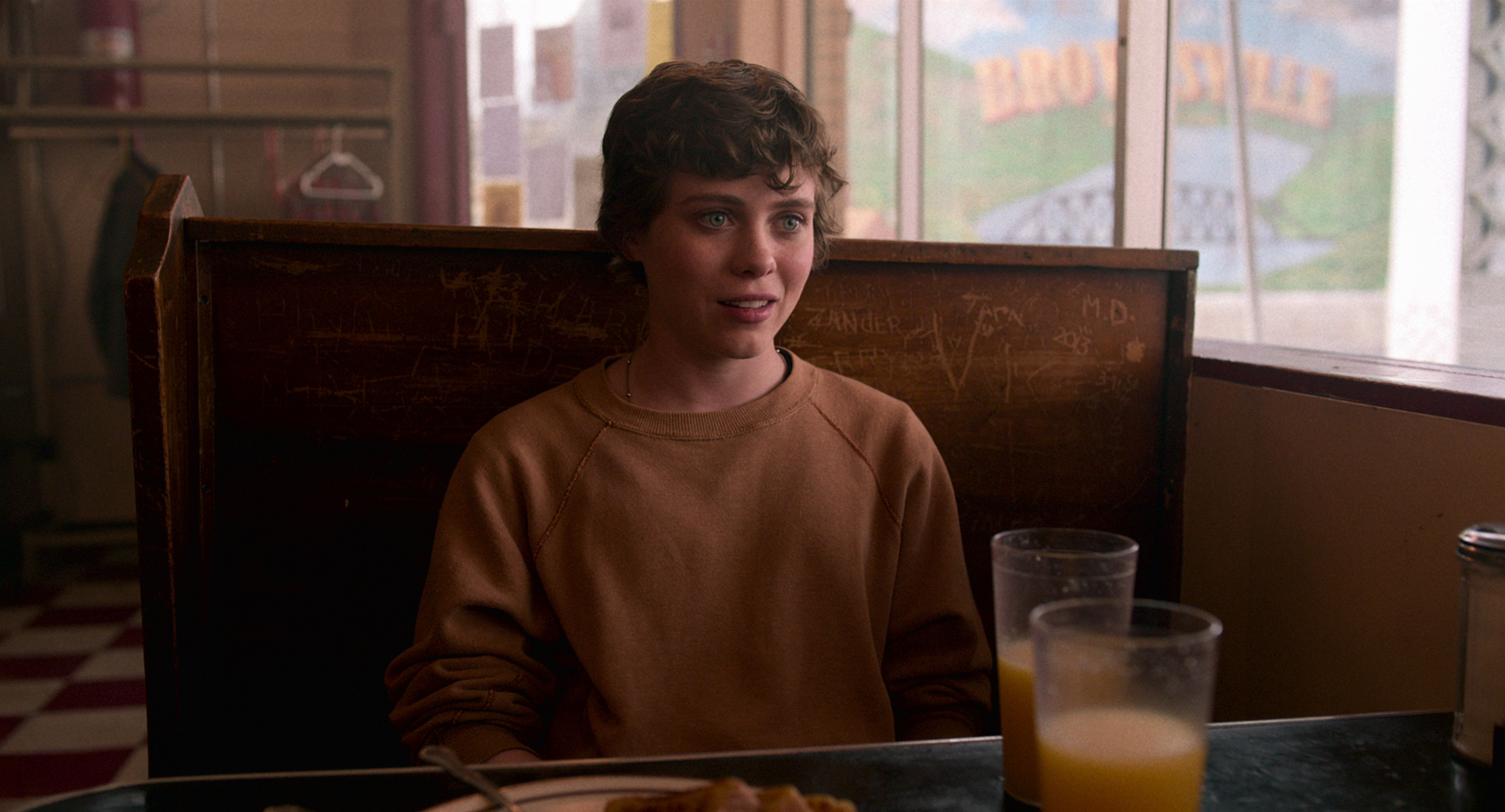
More than 80 percent of the time I just leave it because Dane has made the best choice out of what’s there. The other 20 percent of the time I always understand why he made the choice that he made even when I fiddle and change things.
So that’s why we work well together — we understand each other’s brains and our choices make sense.
McMASTER: So we don’t have to watch all the dailies. Only one of us watches all the dailies properly.
HULLFISH: I’m not suggesting that you don’t watch all the dailies. I’m just saying it’s a process. And so sometimes the process can start with circled takes, and then once you’ve got something cut and now you know what the scene is about. Now you watch the rest of the dailies informed because sometimes that first pass at dailies you don’t know what you need. After you’ve watched the scene cut you then re-watch dailies and see, “Oh! That’s a marvelous moment that I didn’t think I needed, but now I do know I need it.”
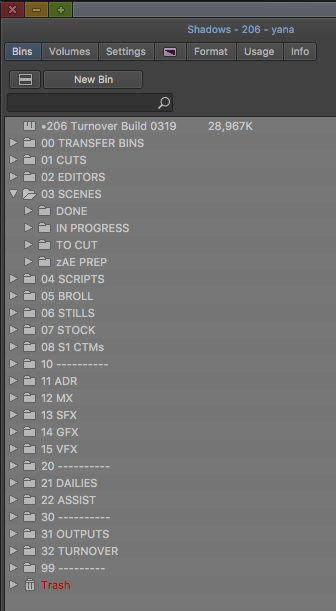
GORSKAYA: Yeah absolutely. I definitely will favor circled takes because I feel like there was thought behind that — a thought that I want to support and make the best version of.
One thing I do is leave markers for reactions because that’s something that’s sometimes in earlier takes is stronger because the energy is higher. So often the things that end up coming in from take one or two of a longer run are the listening beats.
HULLFISH: It was really great speaking with both of you about these two great TV shows. They’re both marvelously edited and this interview was so informative.
McMASTER: Thank you.
GORSKAYA: Thank you. I really appreciate this.
McMASTER: It’s a pleasure getting to talk with you, Steve. I look forward to reading your interviews with other people. And I look forward to a revised updated volume 2 of the book or maybe another book in the future.
The book is wonderful.
HULLFISH: Thank you. That’s really nice to hear. And I love that you’ve been listening to the podcast. One last quick question. You two had to finish your seasons on these shows from home under lockdown due to COVID 19. How did you manage to deliver these shows from home?
McMASTER: Our assistant editor [Varun] cloned identical drives for each of us. And then he uses a process via Resilio sync that if any new media is added, it syncs across all of our machines. So it’s been really seamless.
 GORSKAYA: We use Slack to communicate and then we pass bins back and forth and we’ve created a new organizational system at the top of each project so that the new bins are all up top and organized by person. And we have daily Zoom meetings. We use Evercast with some of our EPs to go over cuts, so we’re live streaming our desktops.
GORSKAYA: We use Slack to communicate and then we pass bins back and forth and we’ve created a new organizational system at the top of each project so that the new bins are all up top and organized by person. And we have daily Zoom meetings. We use Evercast with some of our EPs to go over cuts, so we’re live streaming our desktops.
And because Dane and I work together we’re both kind of in on those sessions and all collaborating together. VFX spotting is done via Frankie.
McMASTER: Our mixes are done with a Zoom call before the mix and then using EPS Cineworks streaming, everybody will listen and then get back on Zoom for notes.
GORSKAYA: Dane and I will get the cut the night before and do a first round of notes before our EPs come in and do their final pass. So we’re getting a couple runs at it and then they’re working remotely, so our main mixer Diego is at the facility by himself and then his effects mixer, Sam, is working from home. Steffan, our sound designer and Steve, our music editor, are also dialing in and sending patches as notes come in.
Then we have VFX houses all over the US and Canada. All those artists are working from home.
HULLFISH: Wow that’s an amazing feat to pull that off with a team from all around the world. Again it was wonderful speaking with both of you.
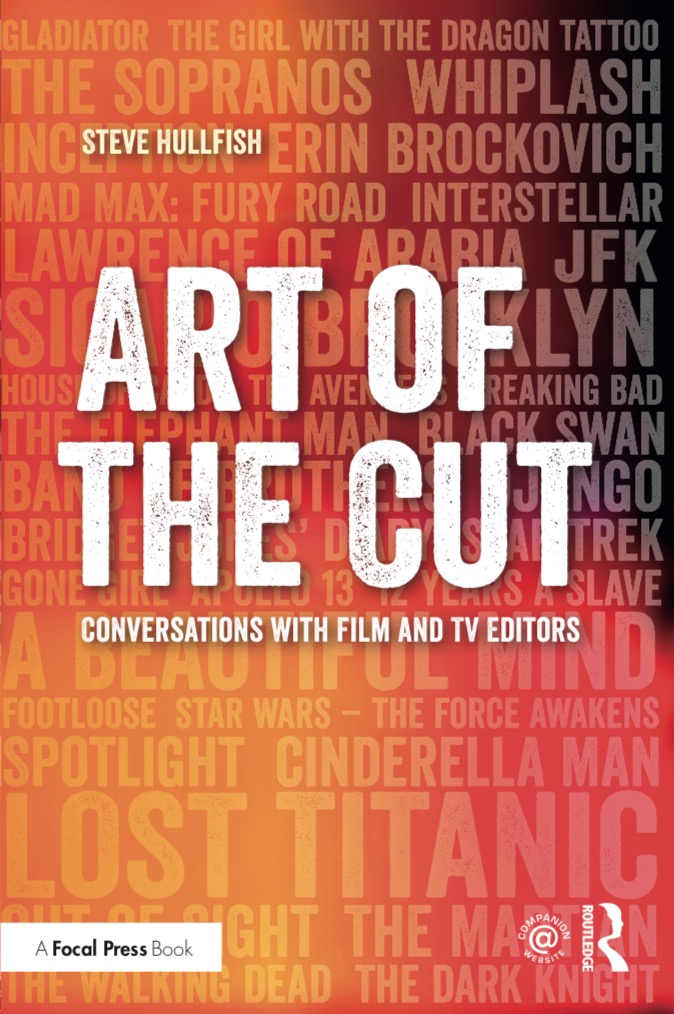
McMASTER: Thank you, Steve.
GORSKAYA: Fantastic. Thank you, Steve. Bye.
To read more interviews in the Art of the Cut series, check out THIS LINK and follow me on Twitter @stevehullfish or on imdb.
The first 50 interviews in the series provided the material for the book, “Art of the Cut: Conversations with Film and TV Editors.” This is a unique book that breaks down interviews with many of the world’s best editors and organizes it into a virtual roundtable discussion centering on the topics editors care about. It is a powerful tool for experienced and aspiring editors alike. Cinemontage and CinemaEditor magazine both gave it rave reviews. No other book provides the breadth of opinion and experience. Combined, the editors featured in the book have edited for over 1,000 years on many of the most iconic, critically acclaimed and biggest box office hits in the history of cinema.

Filmtools
Filmmakers go-to destination for pre-production, production & post production equipment!
Shop Now